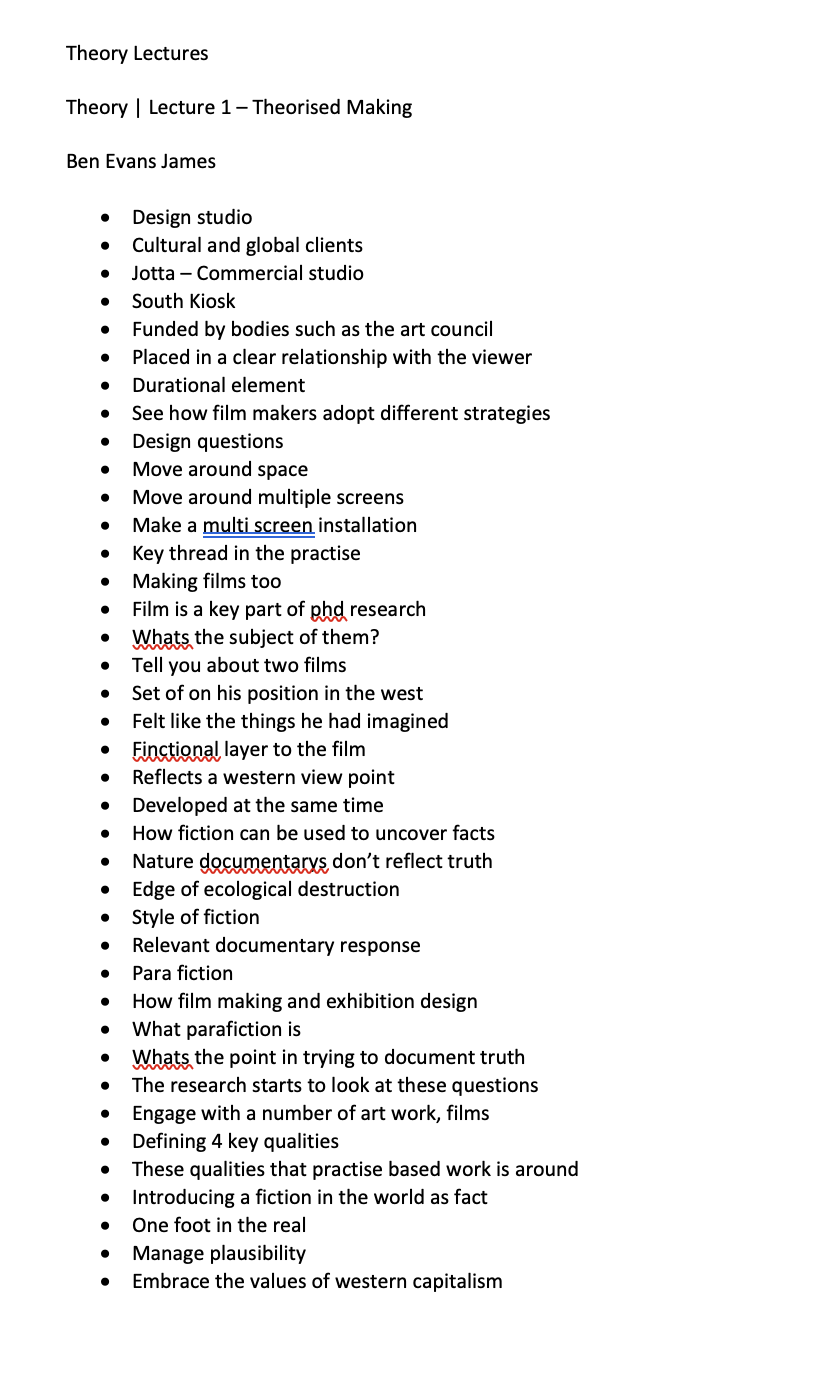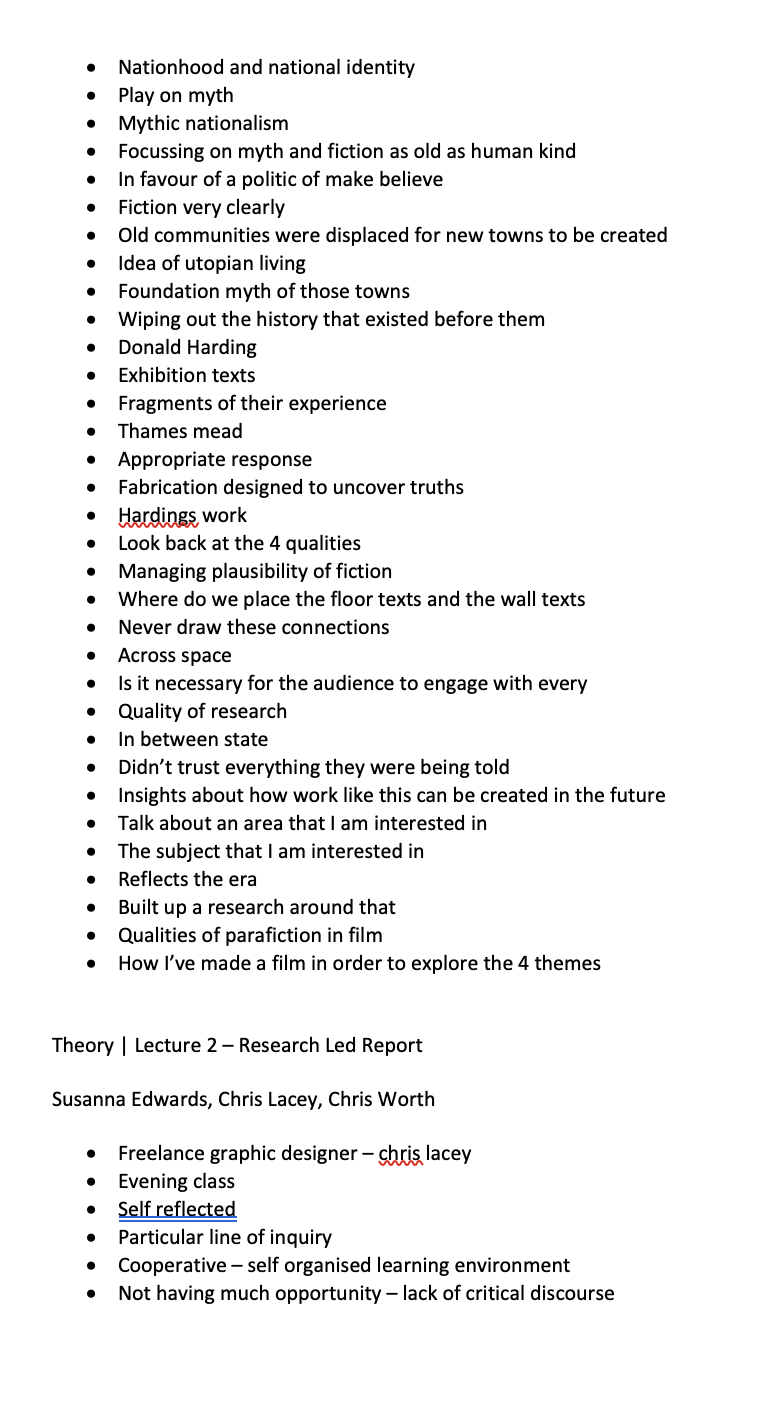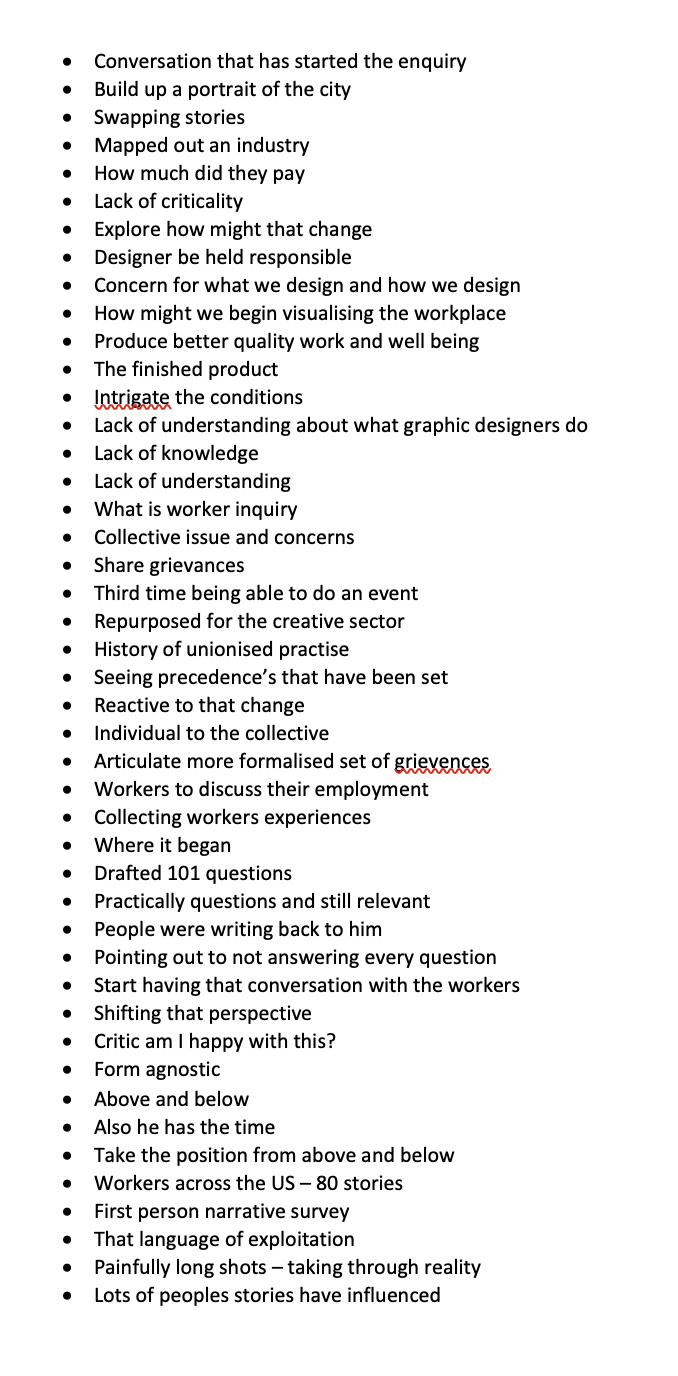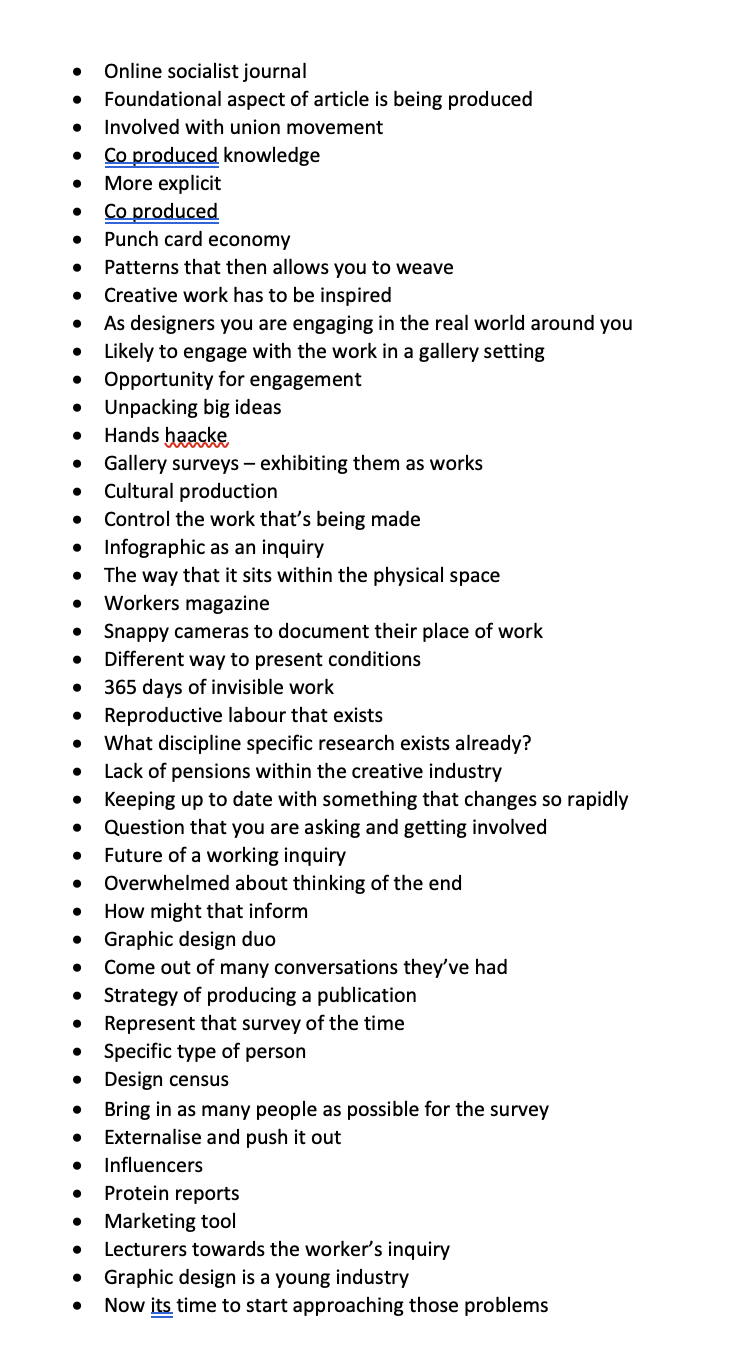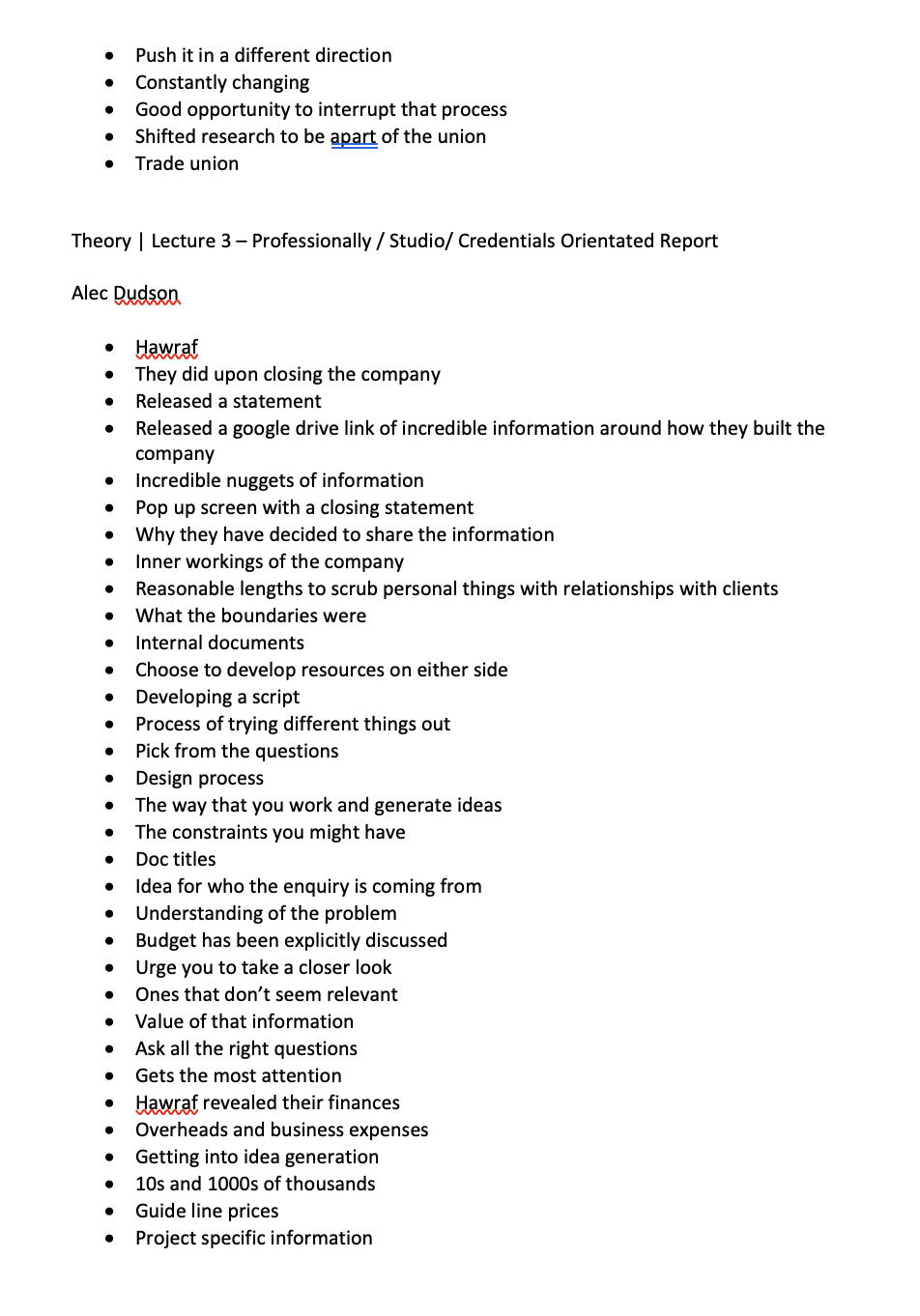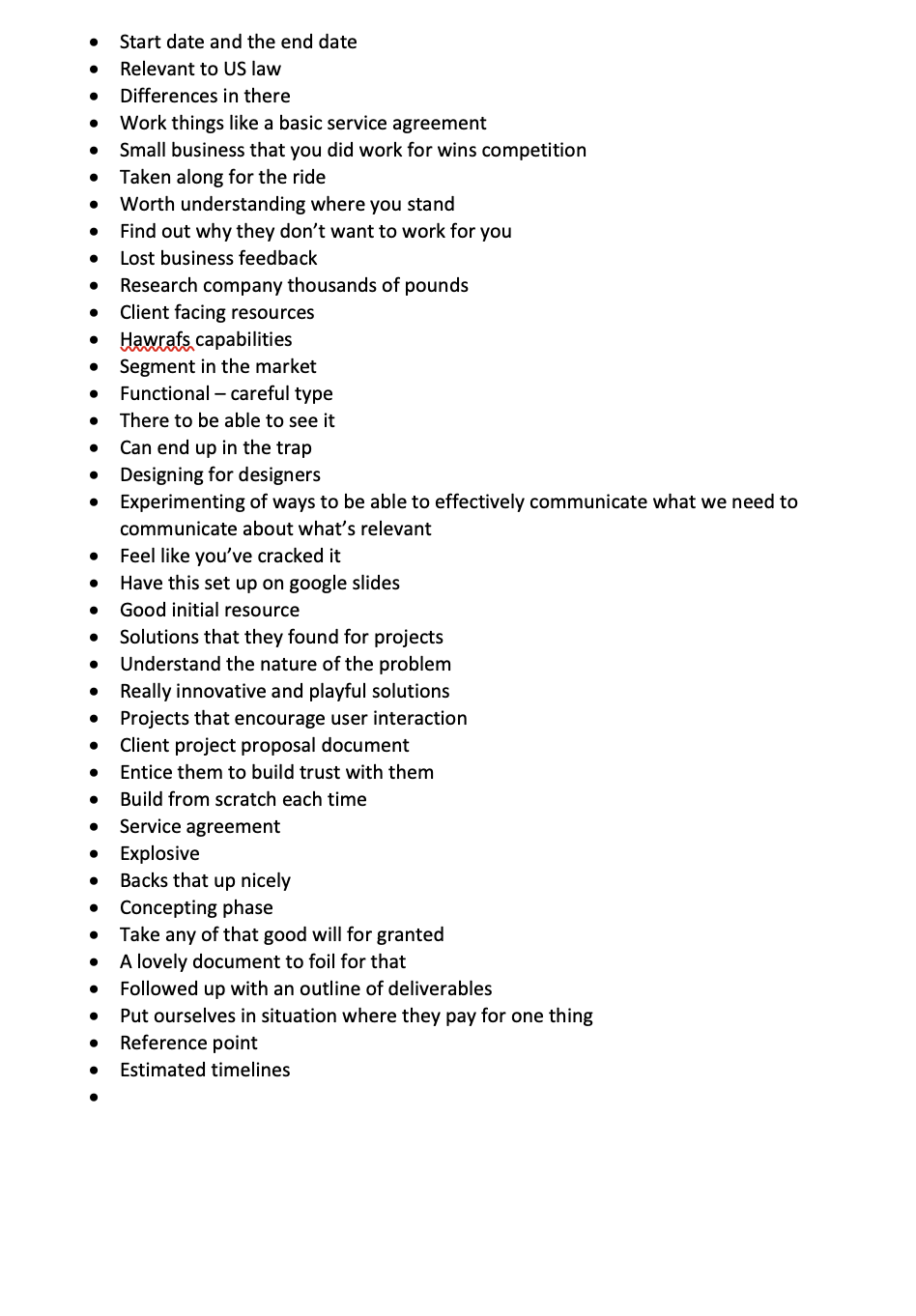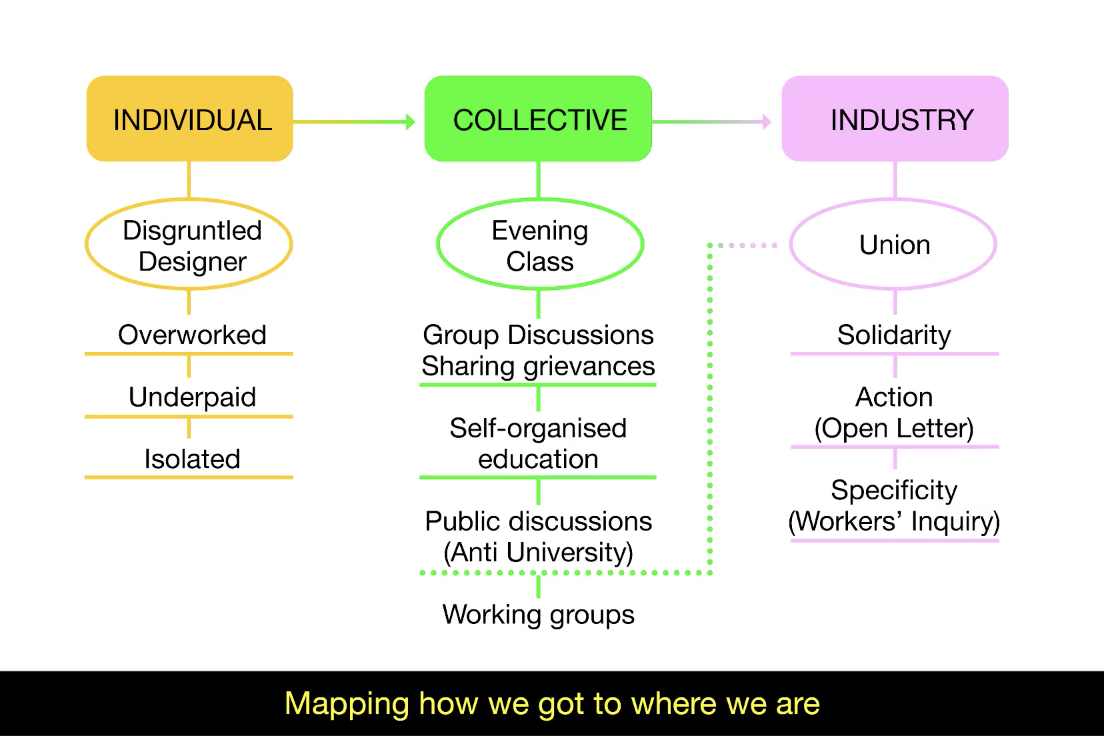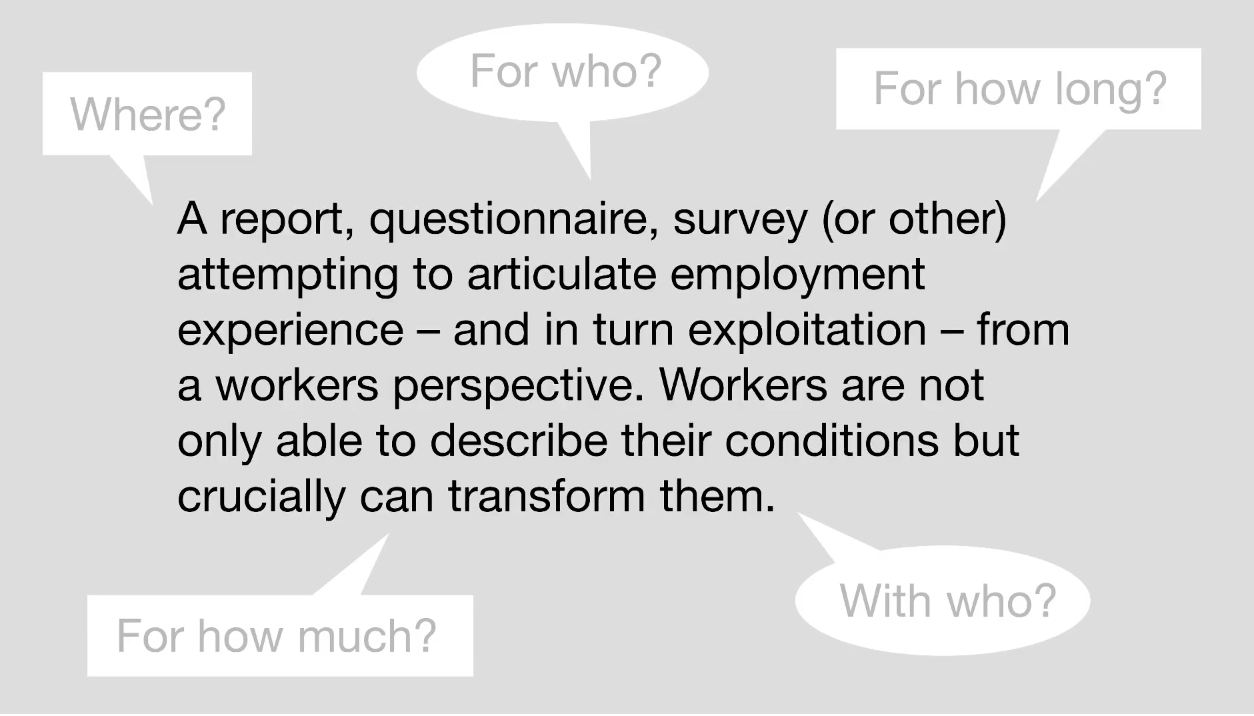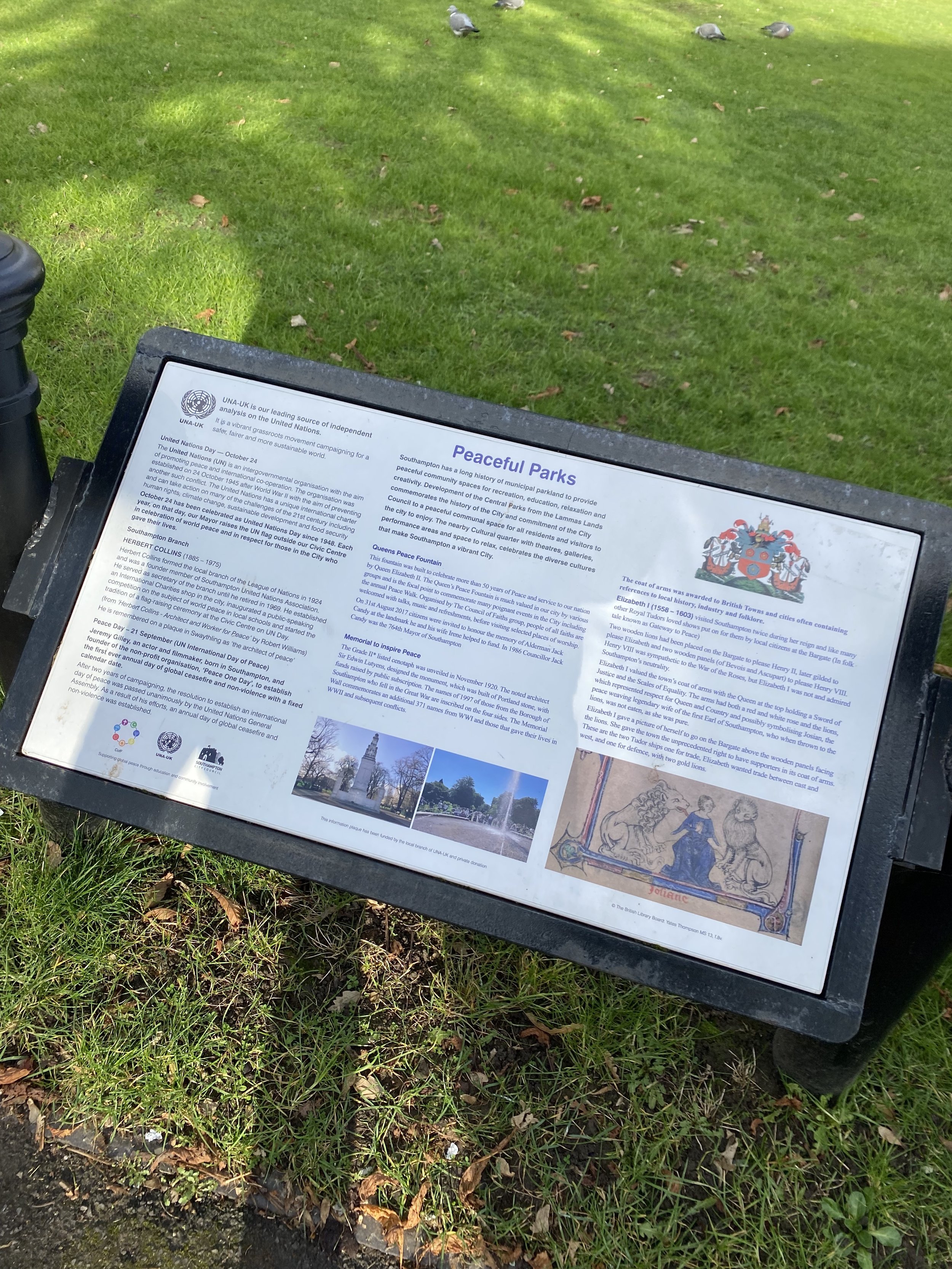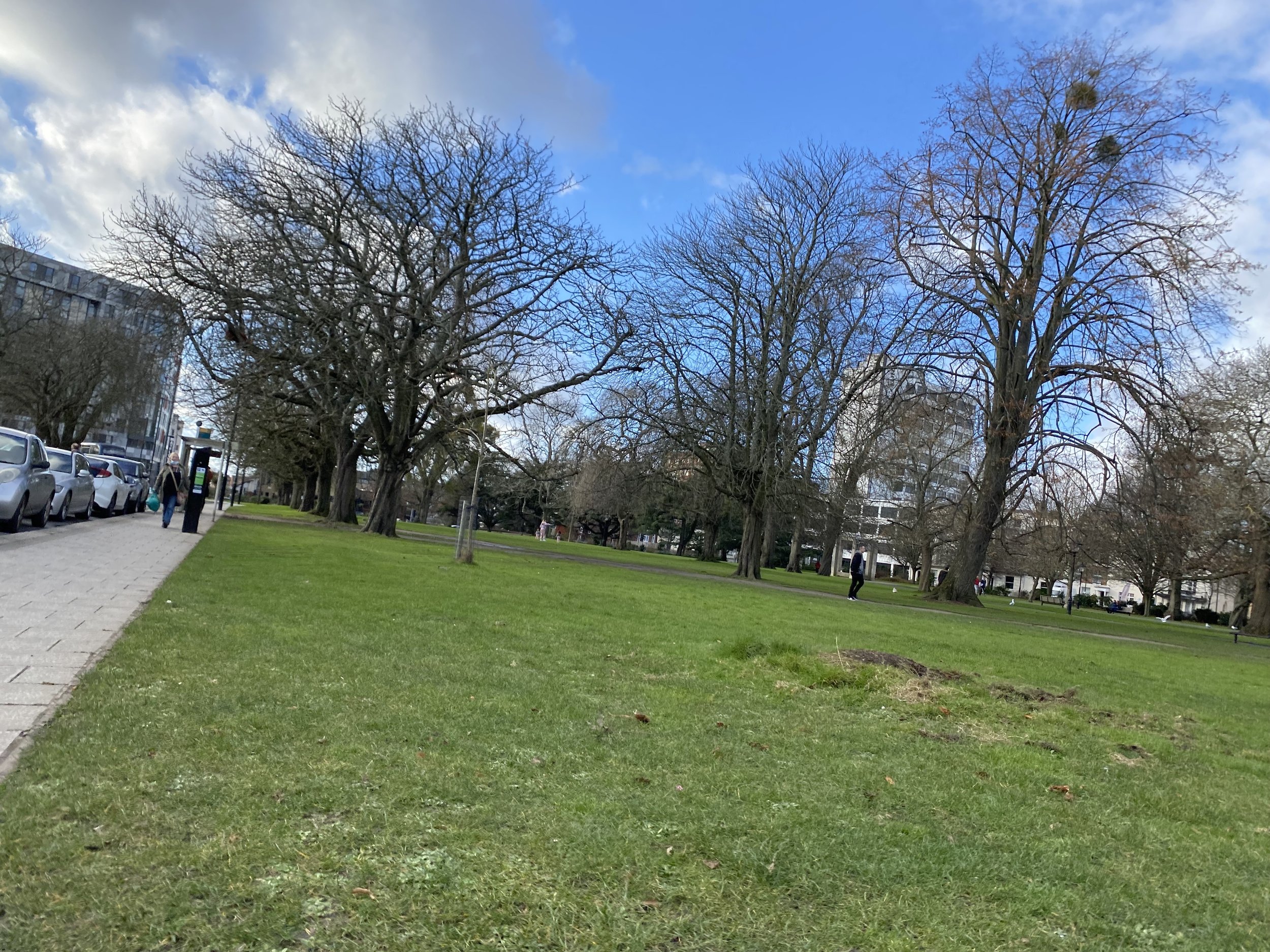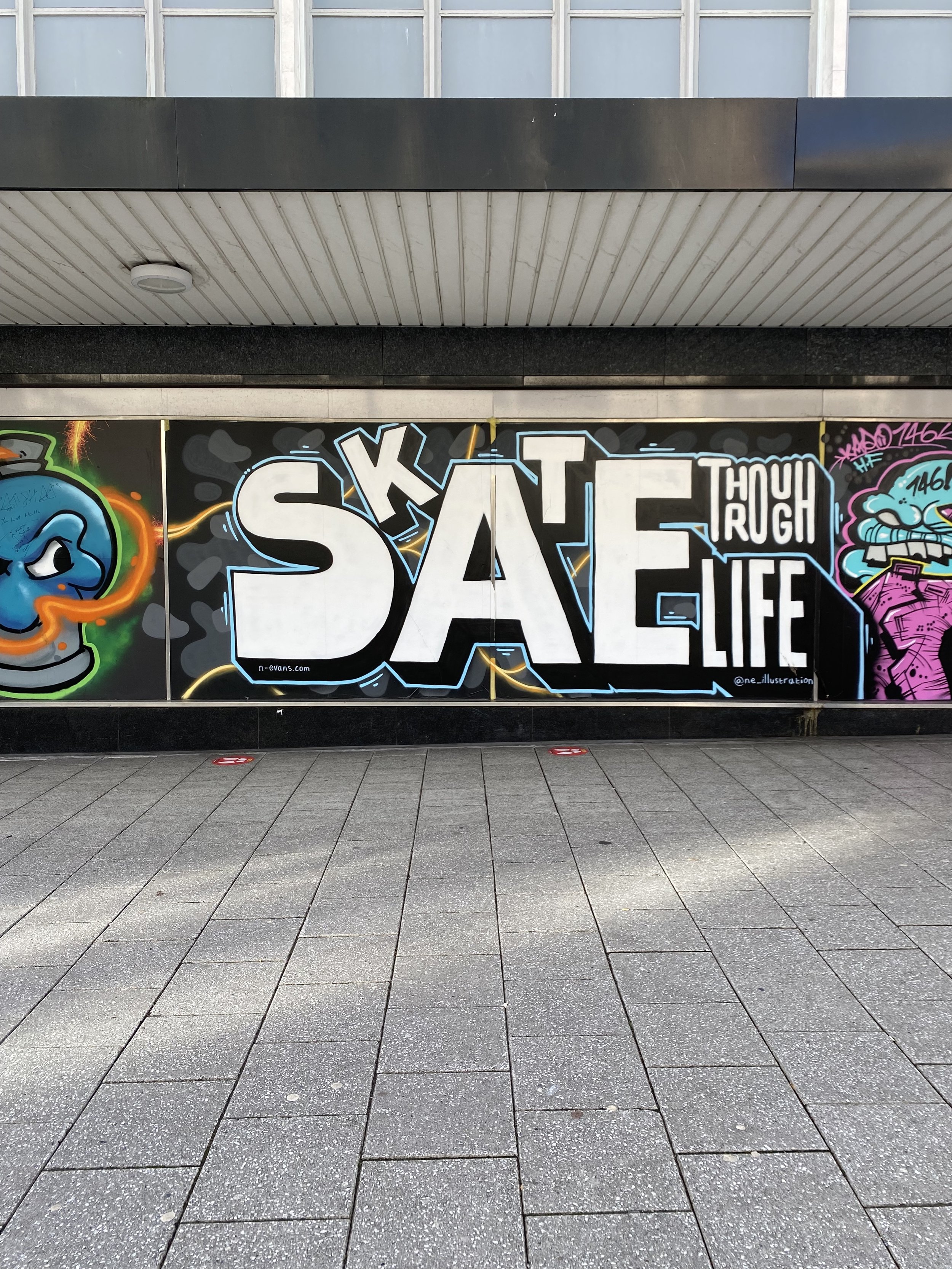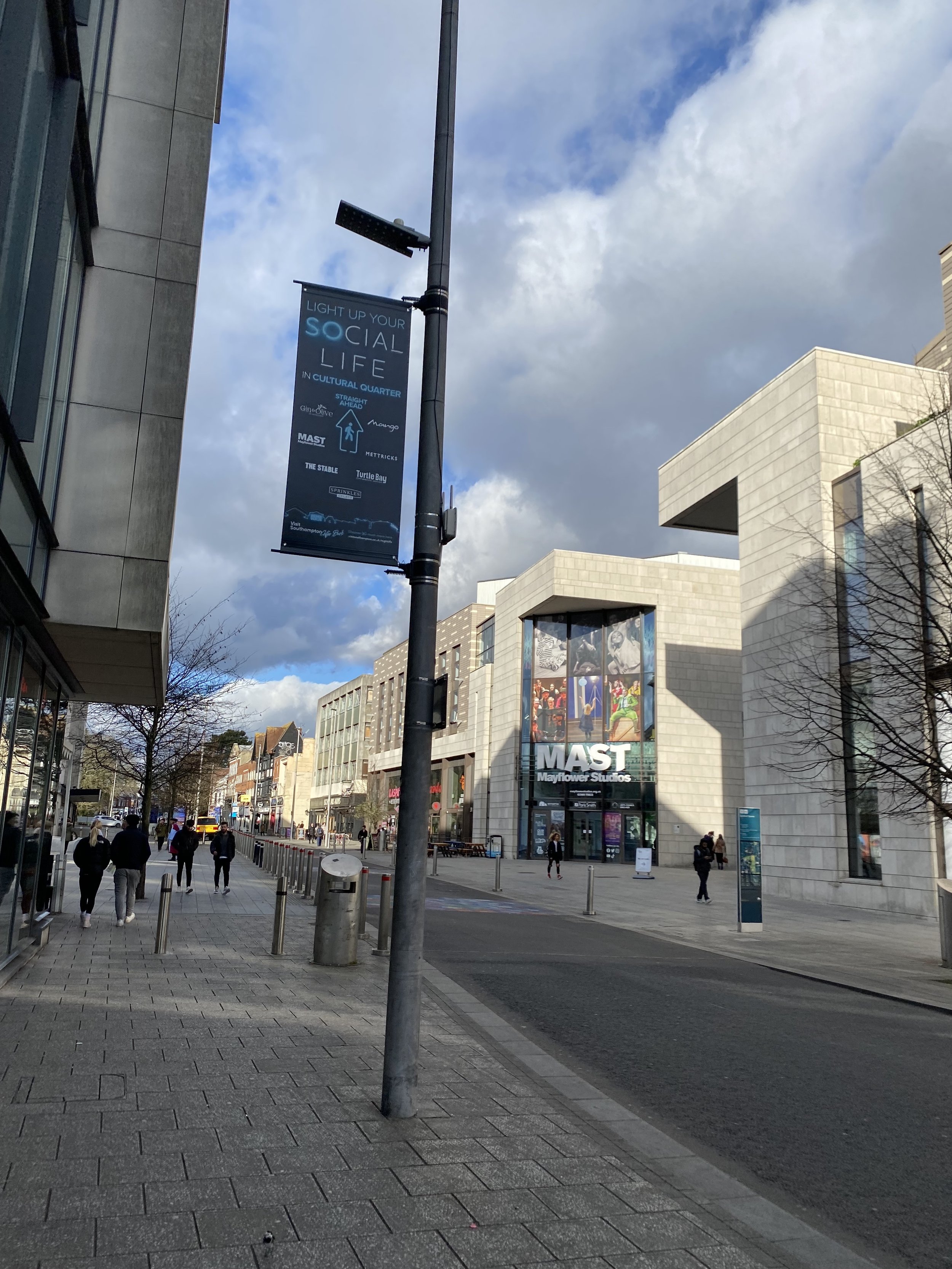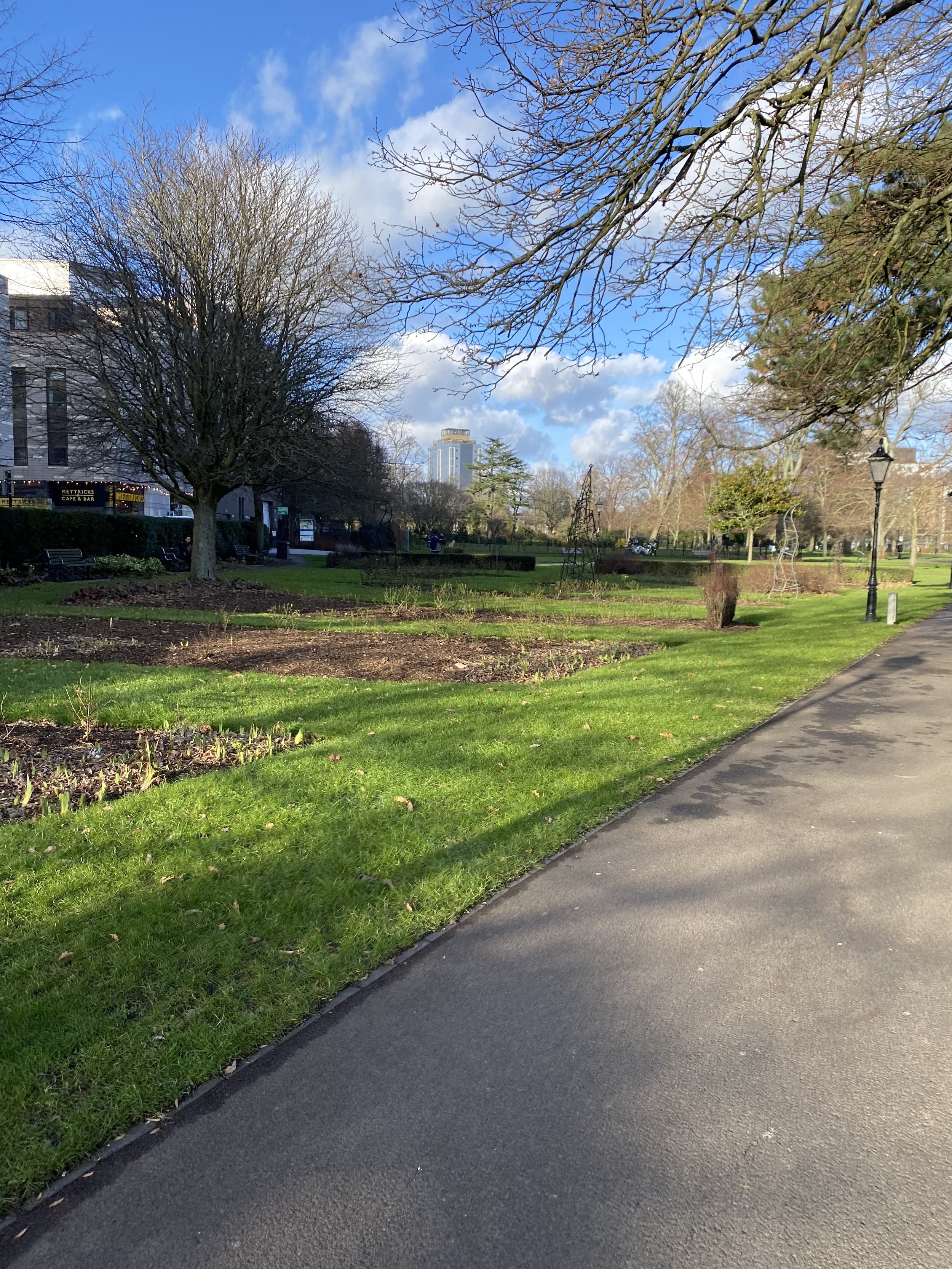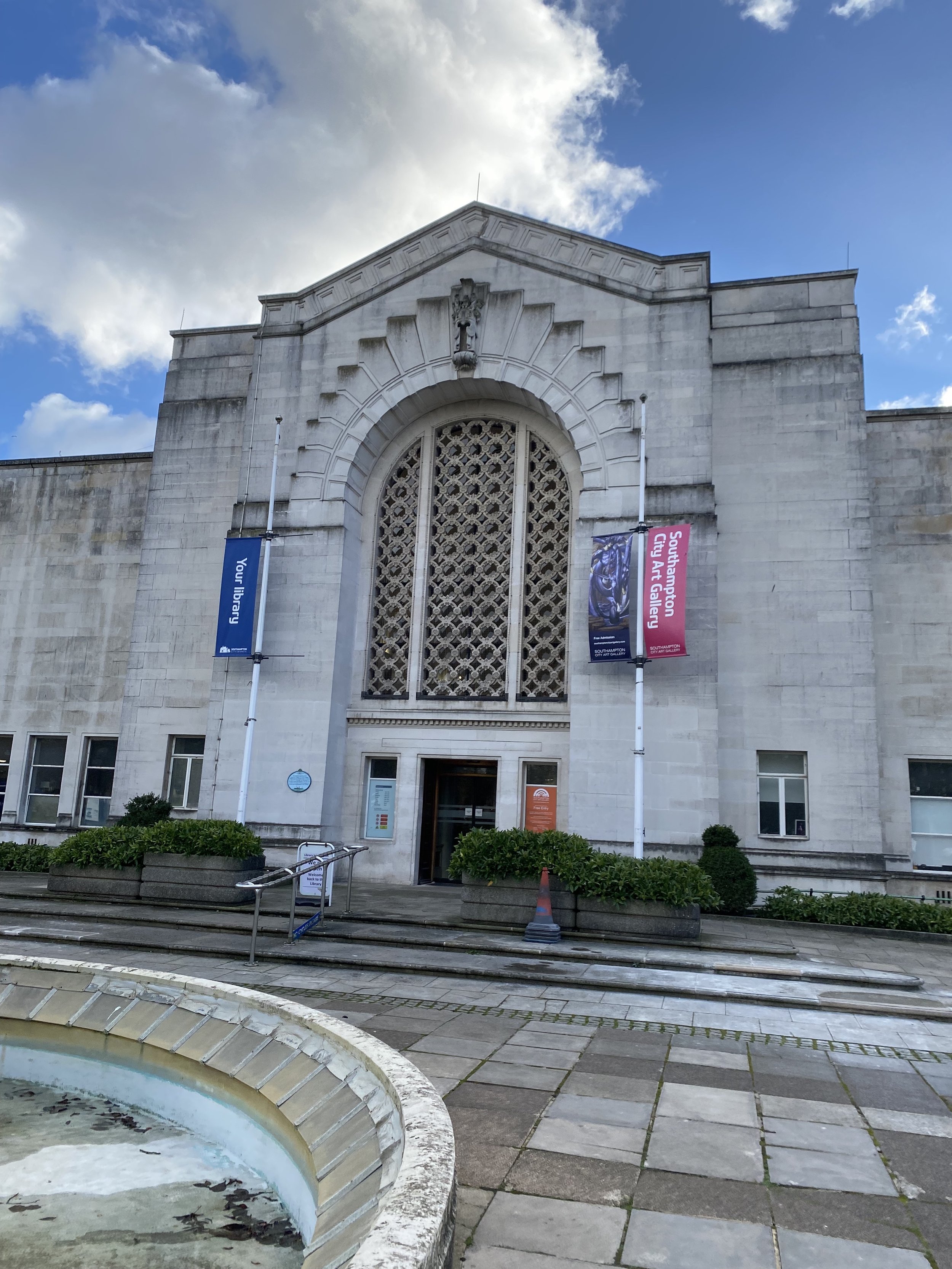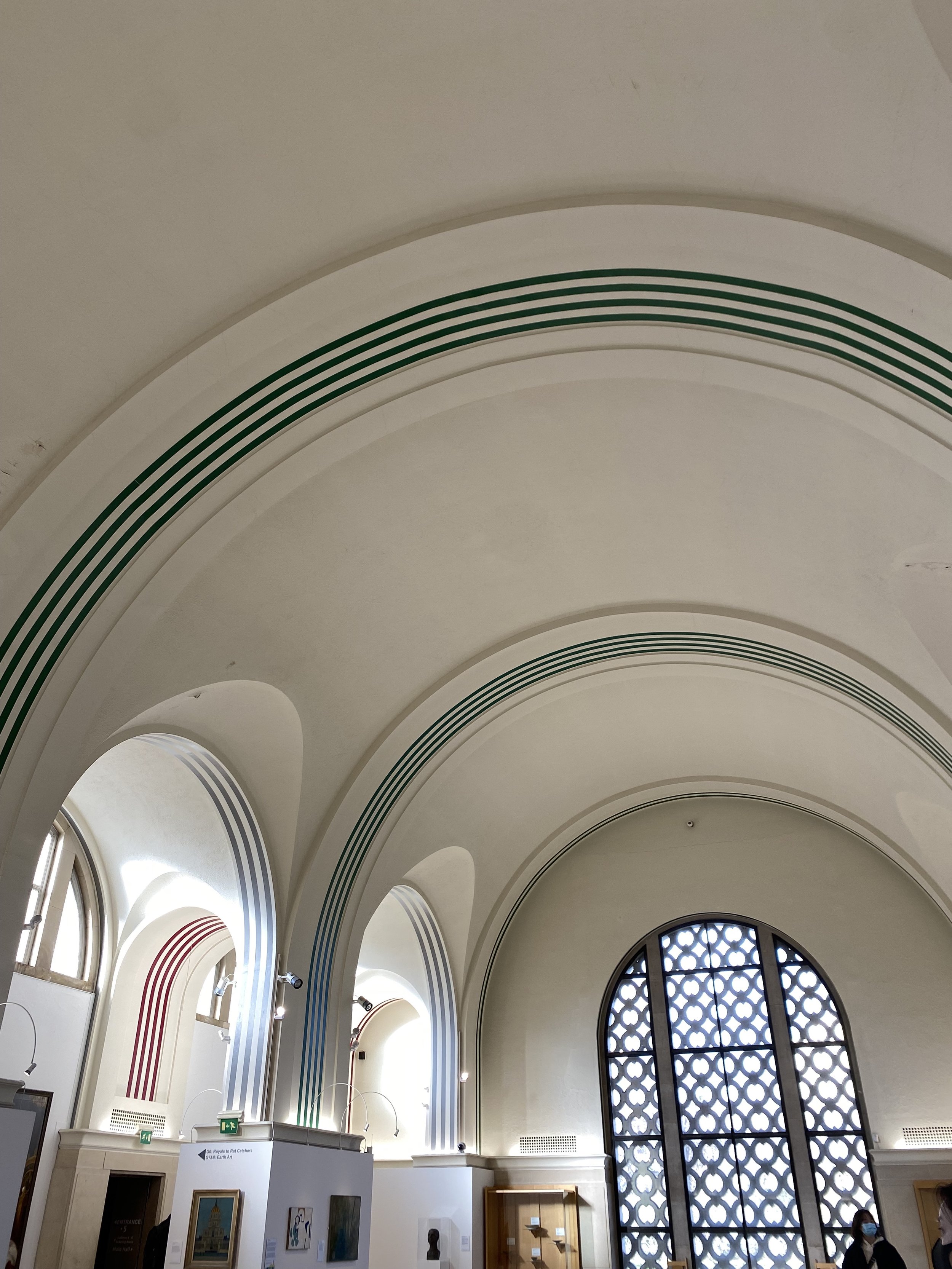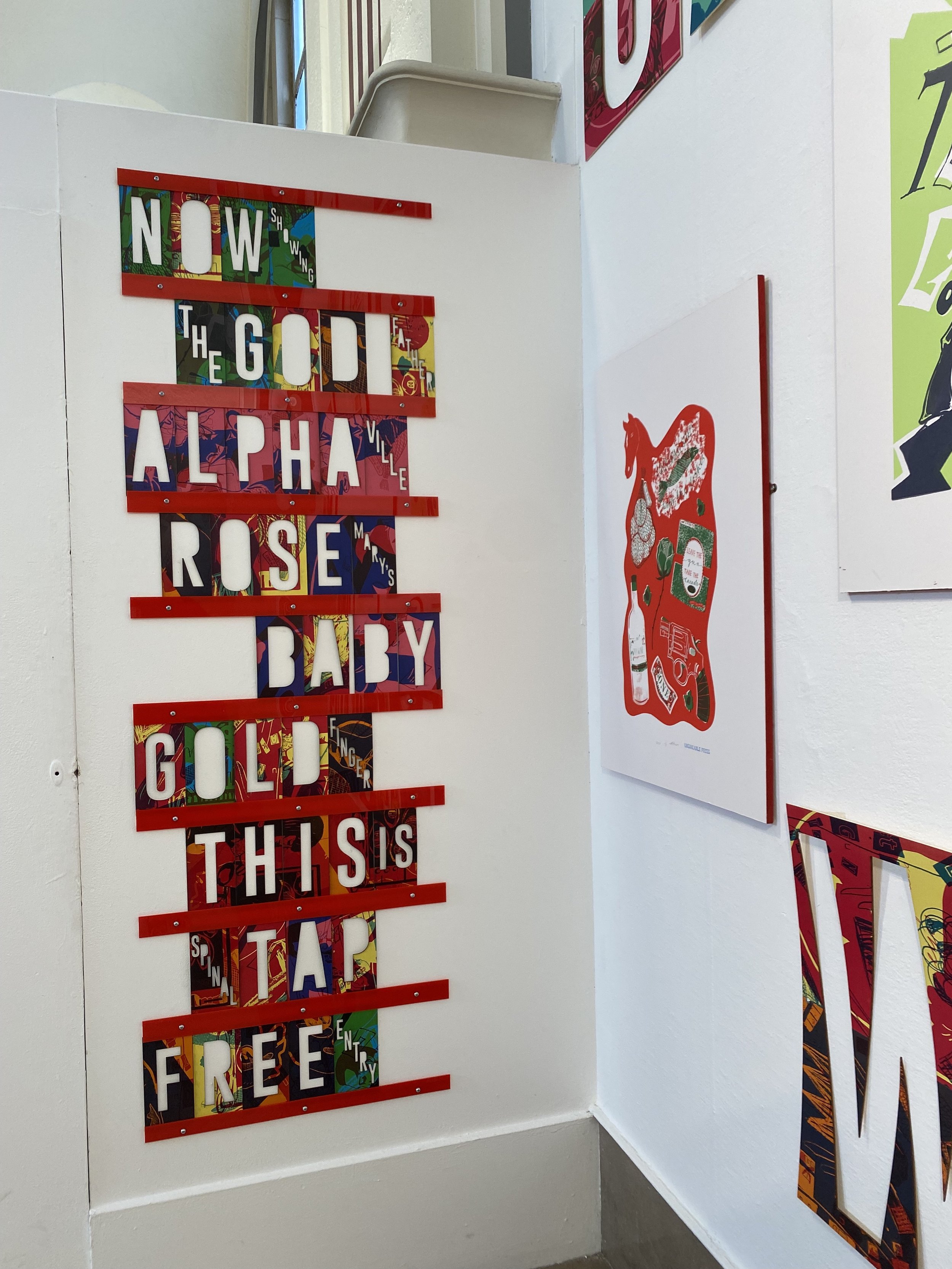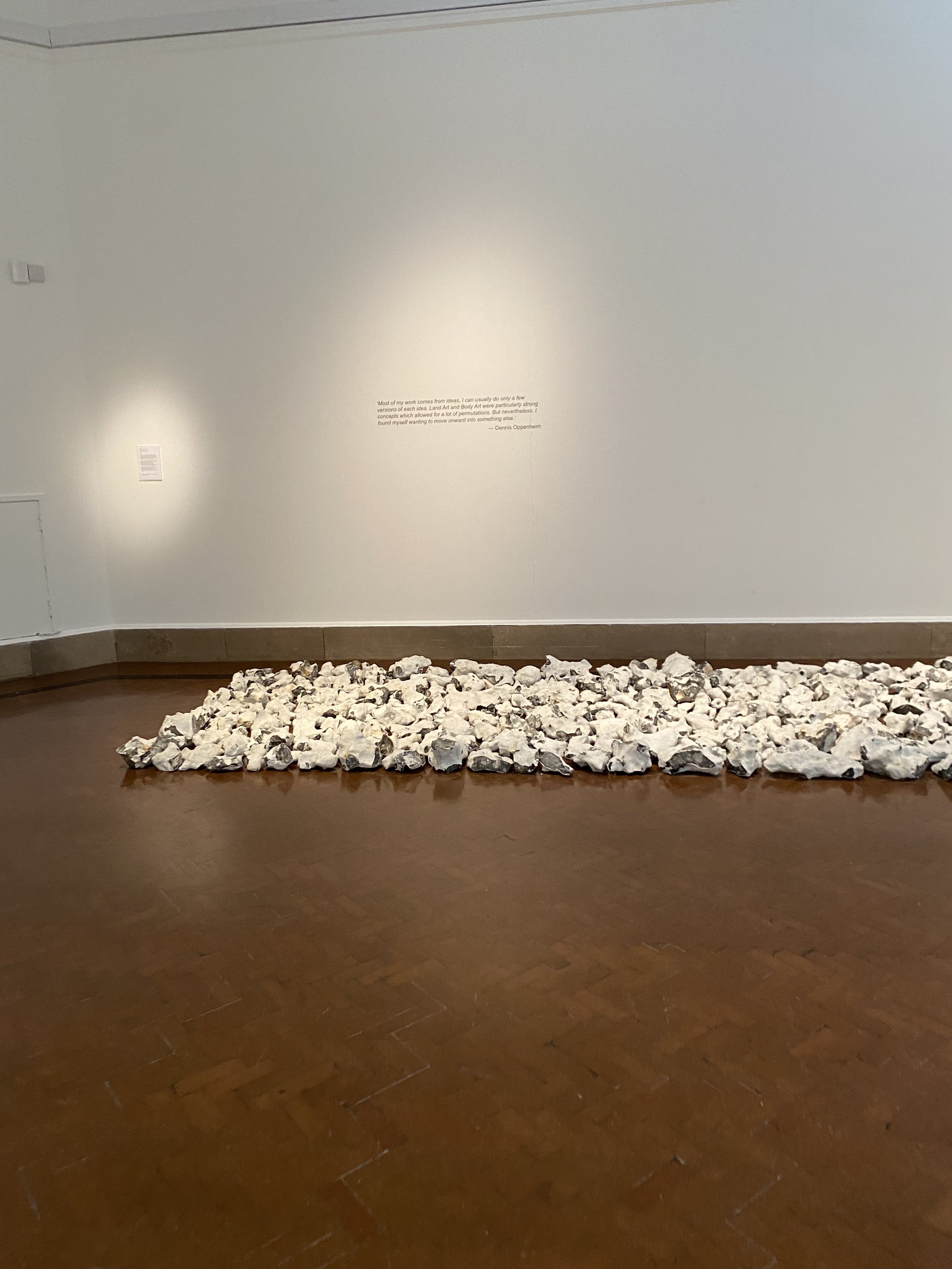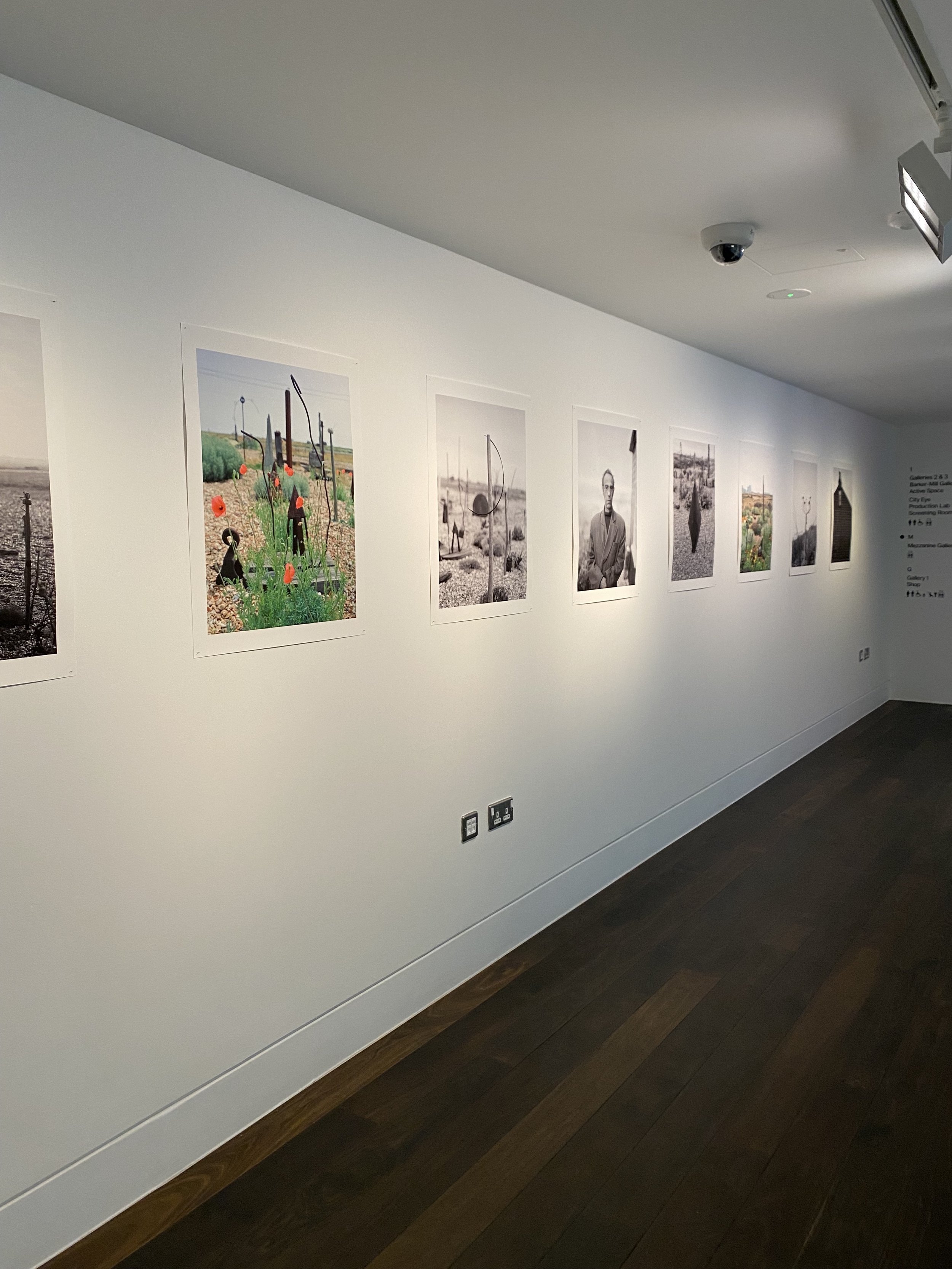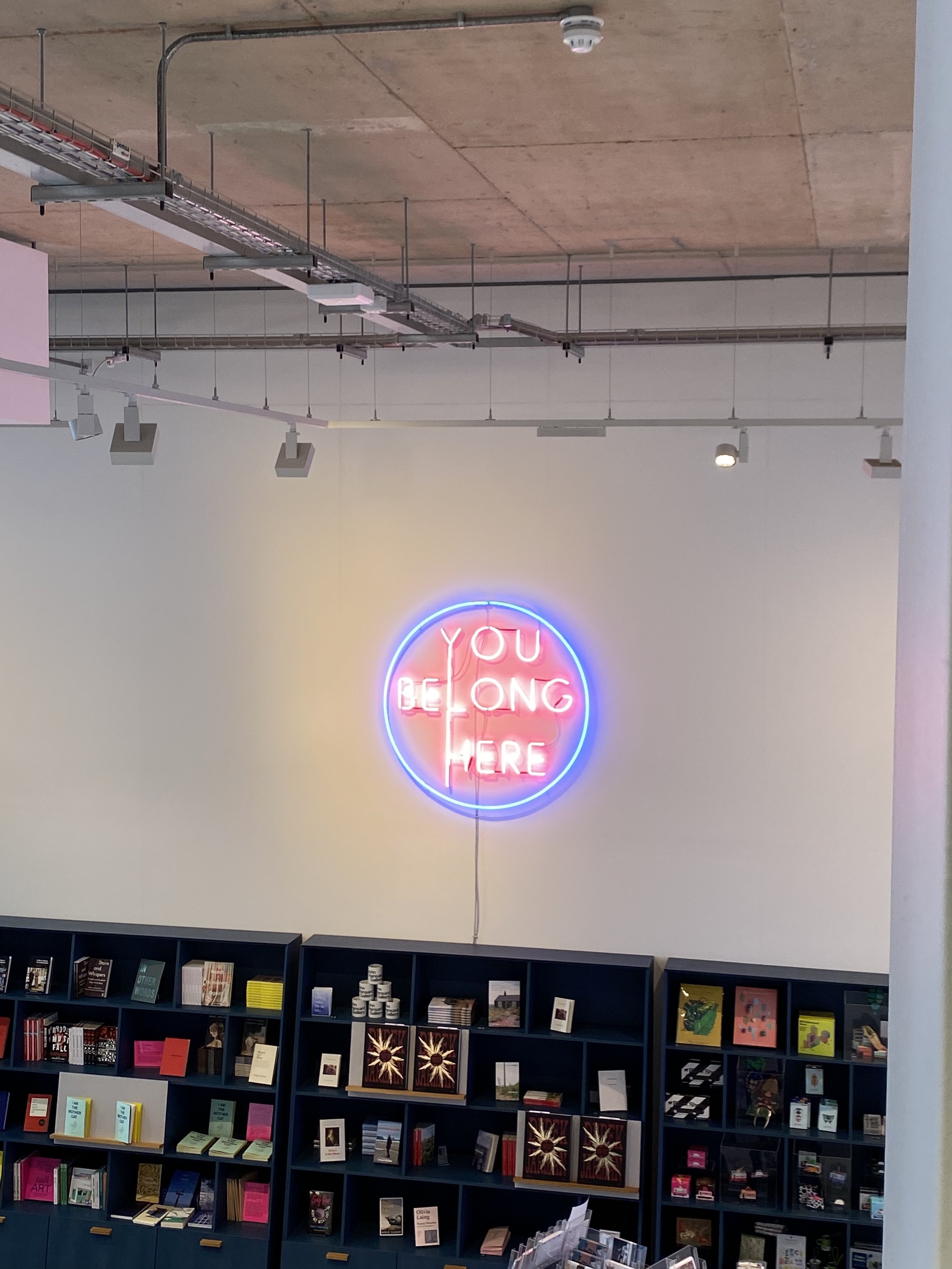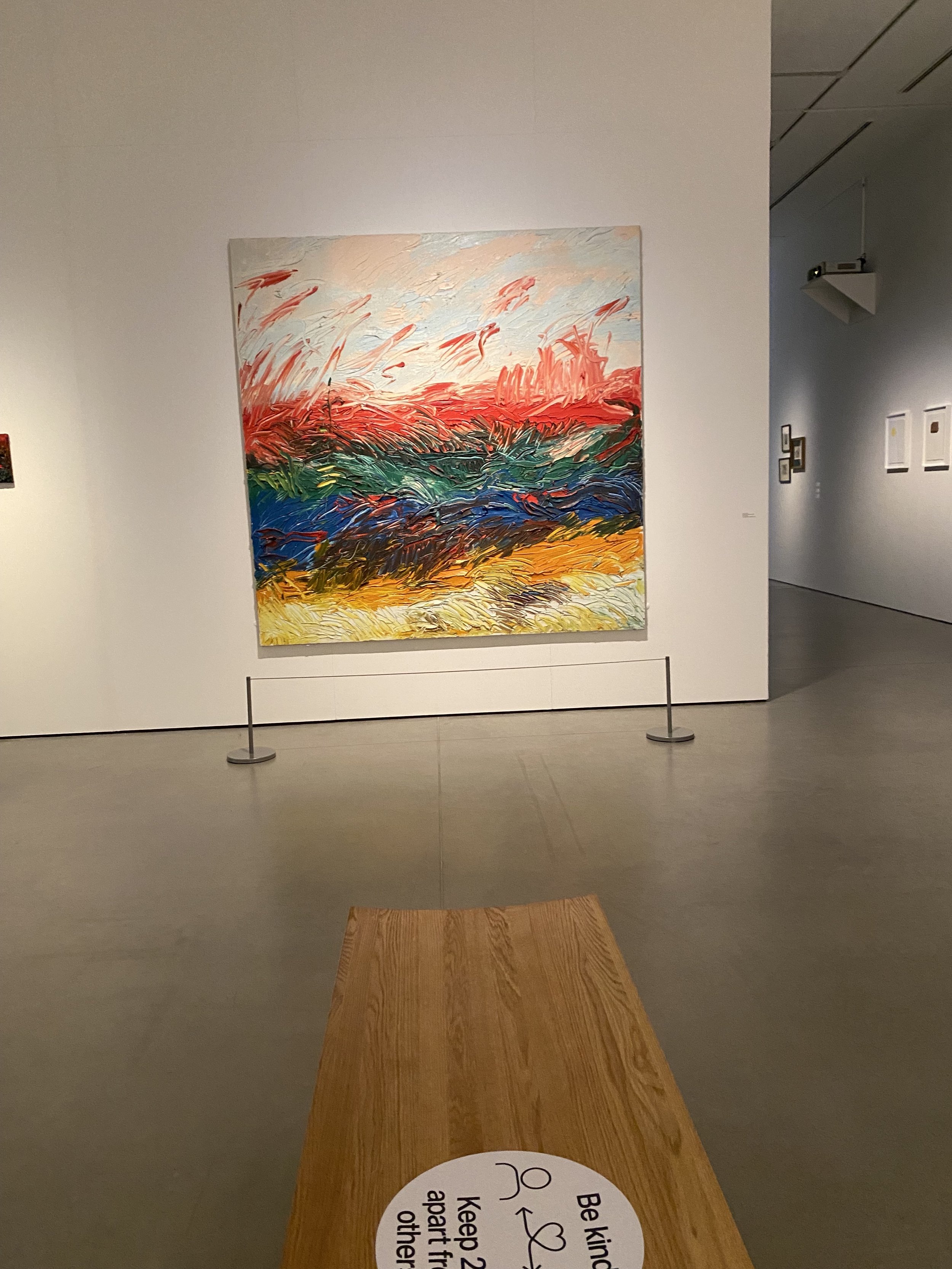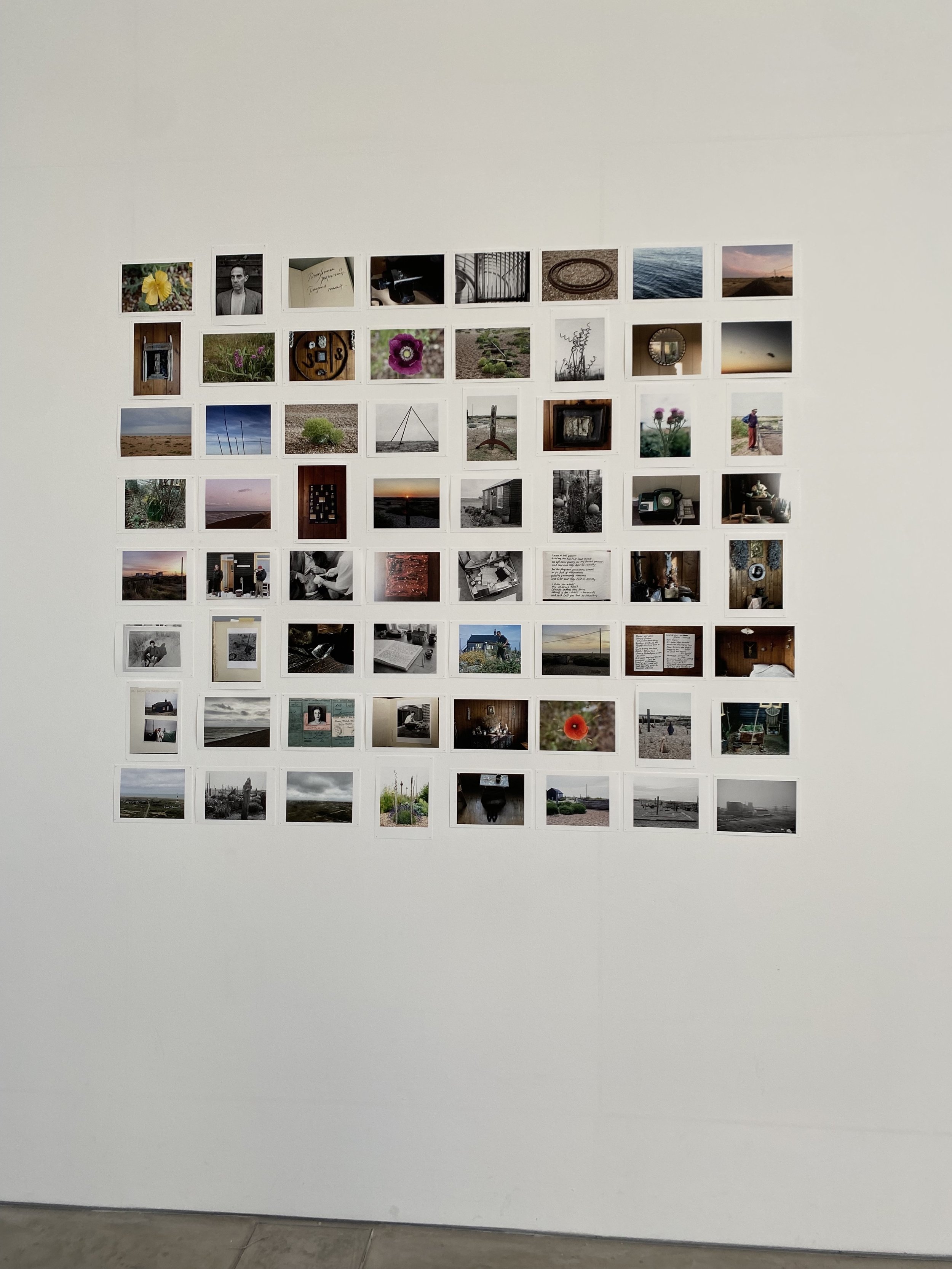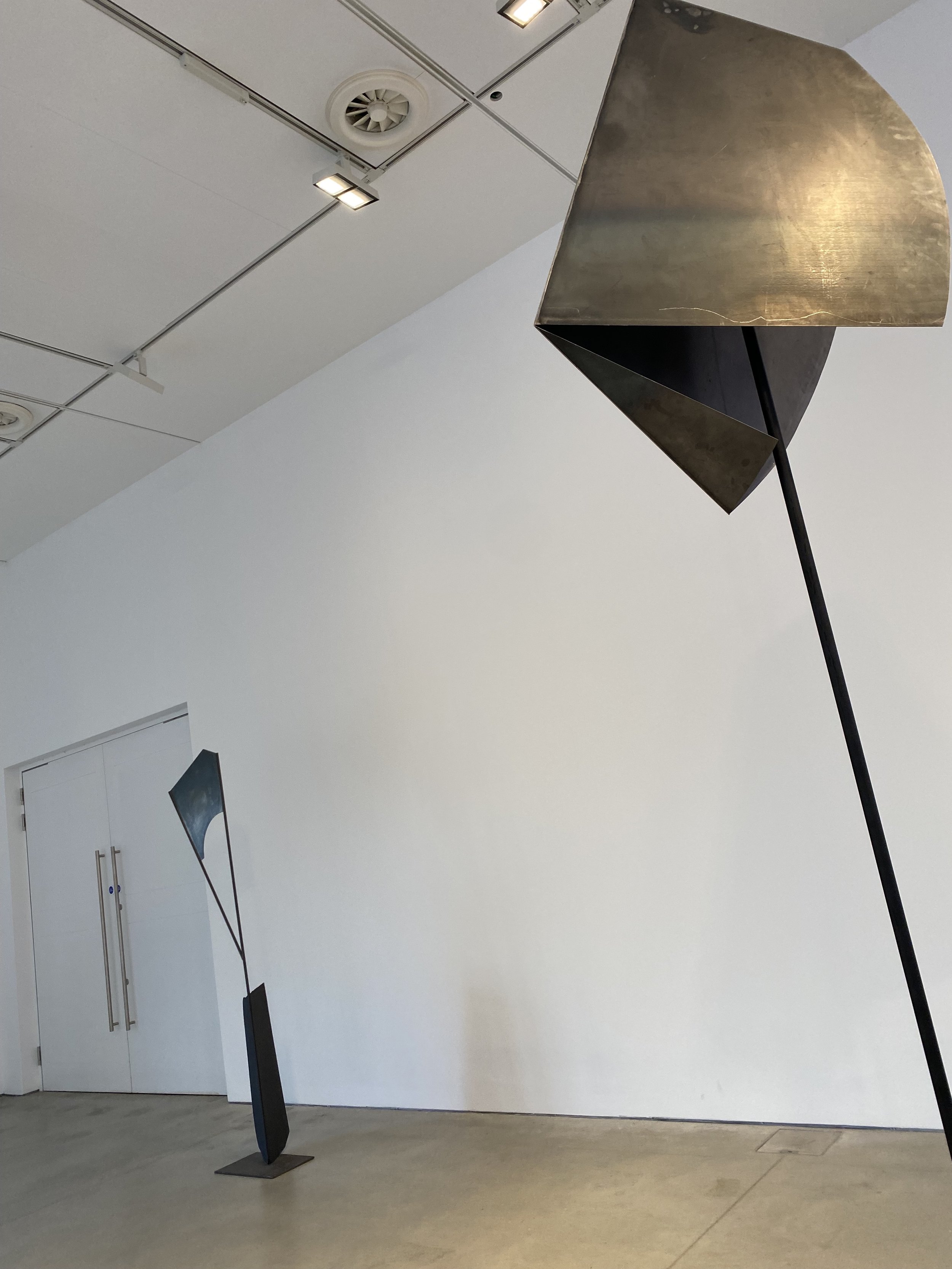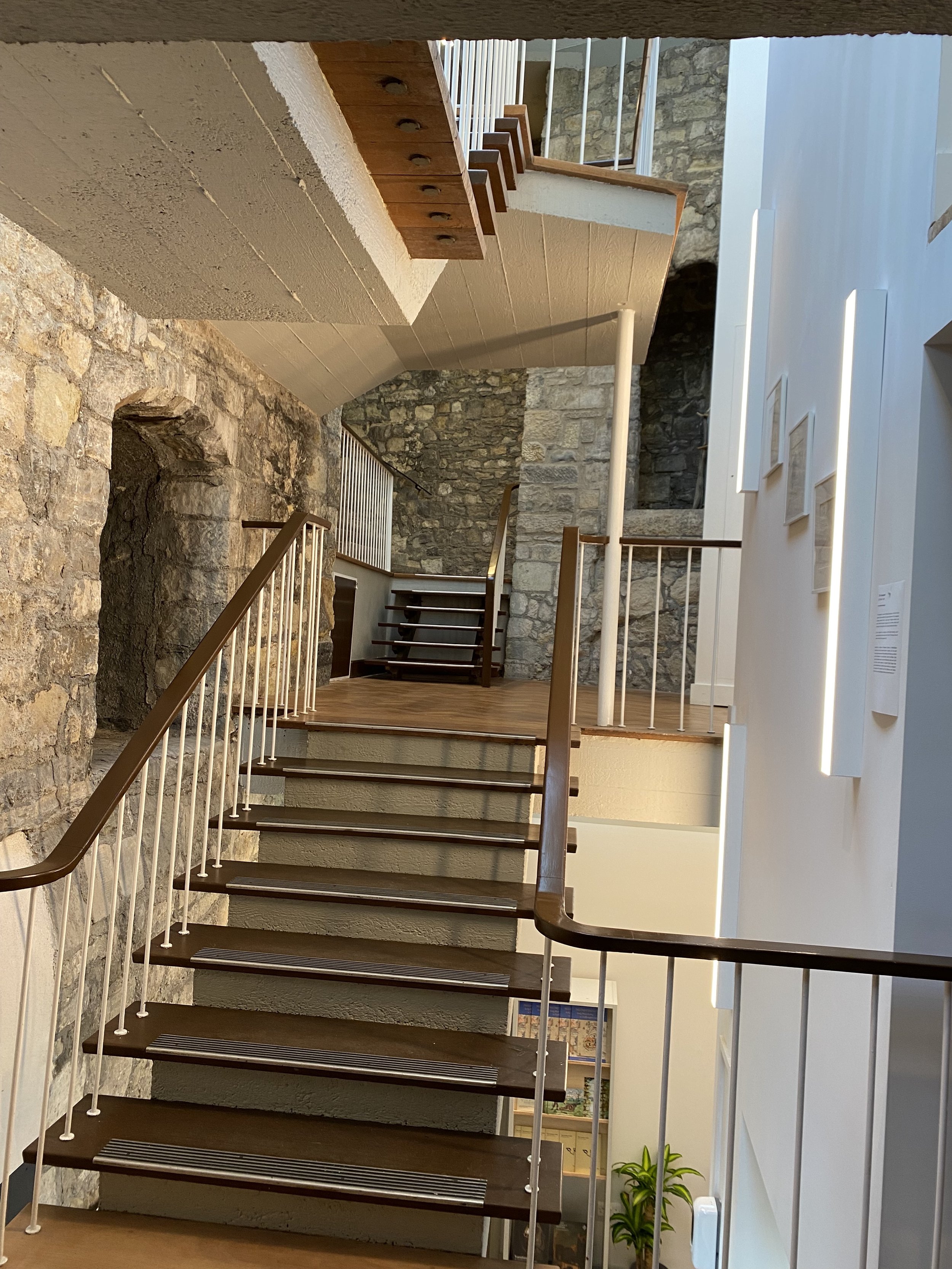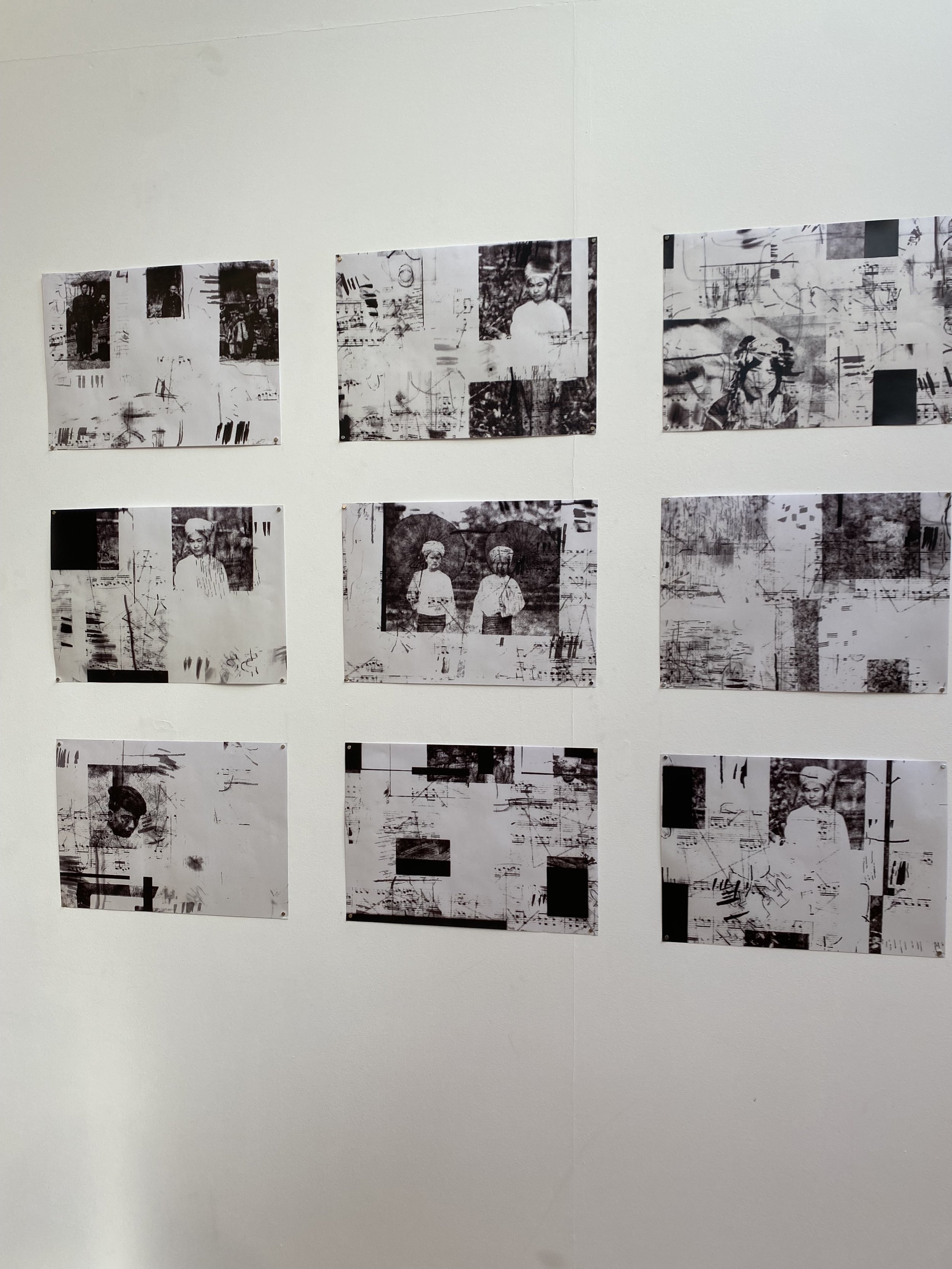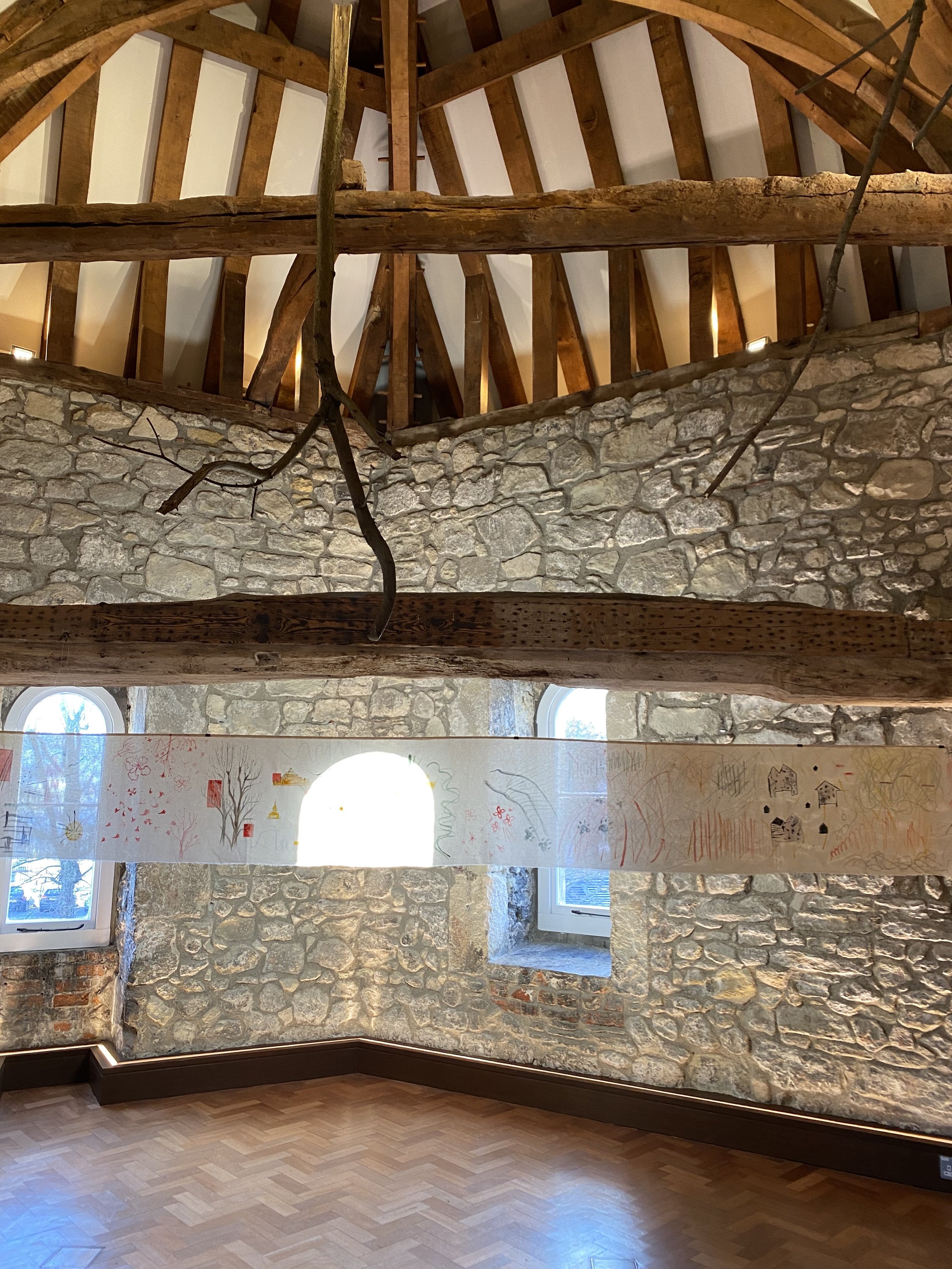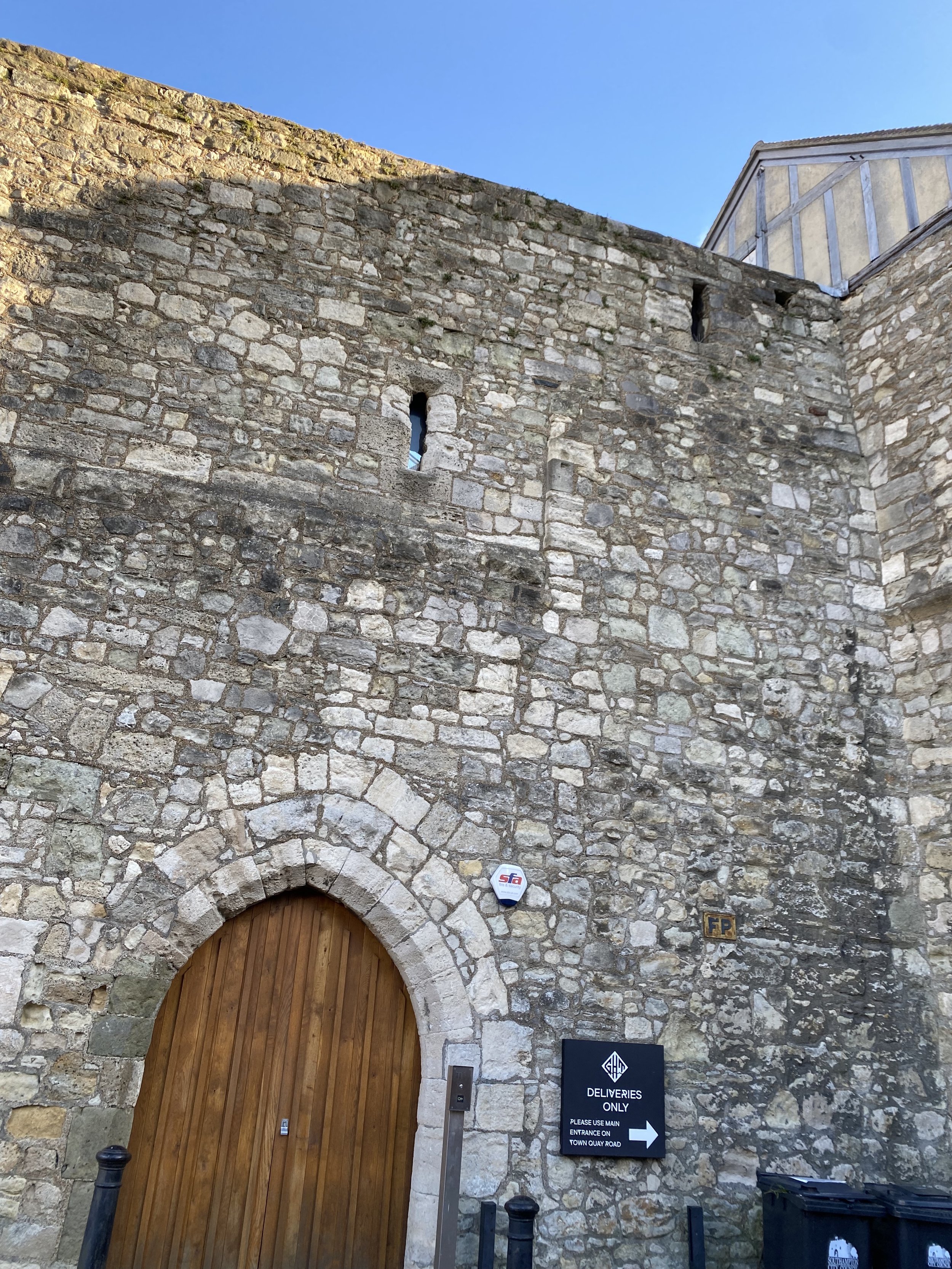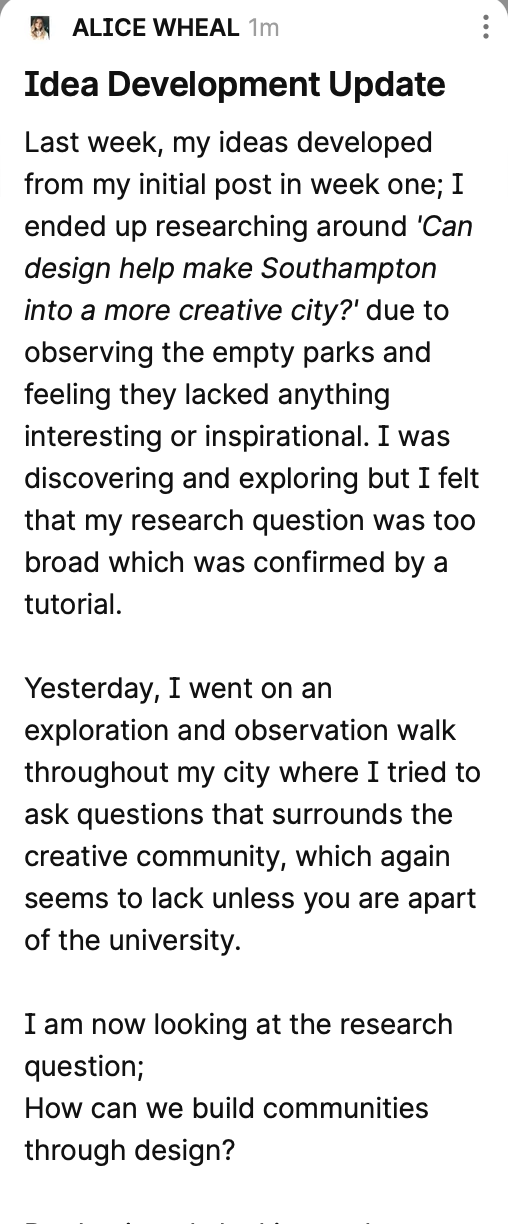Phase 1 - Week Two
Theory Lectures
Lecture 1
Ben Evans James
Ben’s Lecture was really interesting especially learning about what he had previously done and is doing with his PHD and his studios that he runs. I have always been interested in Ben’s exhibitions so it was great to listen to this lecture going into more depth.It made it clear how the practice and the write up of his work can work together throughout the projects. I particularly connected with the explanation of the film creation, trying to do things in order that then fit together.
Lecture 2
Susanna Edwards + Guests
Since I will probably be doing a research led report for this module, It was great to listen to this journey project looking at the workers inquiry, which is something that I have never really thought about before in terms of as graphic designers we over work and the working conditions can some times not be the best even working for free. I was particularly interested in some of the projects that were created that surrounds this topic that I look forward to researching more about this week. I like the reasoning that they have done this project as well, quoting “ Graphic design is a young industry, it time to start approaching the problems”. Showing they really want to make a difference in the graphic design industry.
Lecture 3
Alec Dudson
Although I don’t think I will go down the route that Dudson spoke about within the lecture this week, I found it interesting to listen to him explain the Hawraf’s documents. It’s something that I will come back too and explore more if the content is still there. I remember exploring it within the previous module when we looked at business plans so it was great to have a refresher. I like some of the tips that Dudson also spoke about throughout the lecture, “Remember you’re not designing for designers you are experimenting ways to be able to effectively communicate what we need to communicate about what’s relevant” This is something that I often think about on this course is that we are in fact designing for the designers that surround us.
Lecture Research
From the Lectures that were within this weeks plan, I wanted to just expand on some of the projects that I found really intriguing.
Punch Card economy
http://smeech.co.uk/punchcard-economy/
Sam Meech kept a personal record of how much he worked on a punch card over 24 hours over a month. He audited current freelance creatives creating the final work which was produced on the knitted machine using imaging tools. I was really fascinated by the use of taking the research and creating something from it especially the amount of work that went into the project. I think its also especially special that he’s used his own punch card and really learn about it.
365 Days of Invisible Work
https://www.theshowroom.org/events/365-day-of-invisible-work
The book is made up of photographs from migrant workers, gardeners, dishwashers, artists, teachers but organised as a calendar highlighting the daily work that goes into each task. They drew inspiration from the worker photography movement of the 1920s and 1930s, using cameras to represent the lives and conditions of workers. Hopefully this book will collectively allow us to rethink todays living and labour conditions. I love this concept, giving everyone a camera sounds really interesting to me as I always have this fascination of how photographs catch moments.
Week Two
To start this week, having still not had some feedback on my ideas and direction of my project, going with the project that I am leaning towards more which is the Southampton creativity;
Can design help make Southampton into a more creative city?
I wanted to continue to explore and discovery projects and case studies that surrounded this topic really immersing myself within the topic, I went through the guest lecture archive as well as looking at the Nicer Tuesdays videos as they always have some useful insights.
This project looks at how Niemann used the history of Berlin and it’s surrounding to create pixel work within the underground. He creates these two conceptual pieces of artwork that refers to the landscape that surrounds. I think the creation really reflects how simple it is to create something that reflects the history of the city and also the colours and everything he used he had a reasoning for.
I always find it interesting to listen about how different designers go about creating brand identities. As I am focussing on a place which is my city, it was interesting to hear about the core objectives that were mentioned within the lecture; “Elevate our status, surprise and inspire, change perceptions, do good things.” All to help wales be represented in the right way. I previously saw the collaboration where they created the welsh digital typeface and how impressed I was that they created that for wales, taking all these points and putting them within southampton would be a really interesting concept.
https://fast.wistia.net/embed/channel/442tfhl7jj?wchannelid=442tfhl7jj&wmediaid=jvzecgrru1
Jim Sutherland - Studio Sutherl
I watched the guest lecture from Studio Sutherl which I found within the archive of guest lectures. I found some of his work and the process of how he creates so interesting. I feel I am a similar designer to Sutherland as I like to observe whats going on around me and take inspiration from the simplest of things that make up and create a project. Due to also being a list making and an organiser - I really like his technique of writing post it notes and after completing tasks taking them from one side of the wall to another.
The projects that Sutherland partook in, I was especially taken with the signage that he created for Kings Place, using the simple technique of the common theme which was of course the sound. Using this as inspiration across the whole identity even for the business cards and emails. This just shows how far you can take and push an idea. The other project that I particularly liked was the Walworth gardens, taking the theme of plants and creating symbols that then turn into the logo and then you are able to create everything from them. Such a simple method that was taken far. I especially love that Sutherland pushes his work across all the mediums and tries to see things in different materials which I would love to do within my work for this project.
These case studies really made me think about my research question and what i was able to do with it and the journey that I could go on. Thinking of my question; Can design help make Southampton into a more creative city? I needed to continue to think about how I was going to do this and in what context, the main thing I was questioning was; where do Southampton creative people gain their inspiration from? The main art university is within Winchester, so more creative business are based there. When observing across Southampton, there are a lot of brown and green colour pallets throughout the city apart from when it comes to the docks or the front of Southampton which is of course the sea. The docklands could be regenerated like it was done in Liverpool;
Liverpool regneration dockland
https://regeneratingliverpool.com/zone/liverpool-waters/
This 30 year regeneration project that has been started in Liverpool, it currently has 60 hectares of historic dockland that is being changed to created £5.5 billion world-class, high quality, mixed use development. The site will have commercial space and alot of new spaces for housing. The idea for a space that is next to the site is called 10 streets, which is based on 10 ideas that “aim to nurture the assets and opporunities unique to this to this part of the city – stunning maritime architecture, a diverse commercial and industrial heritage and a pivotal location. The area has already become an established events destination thanks to the trailblazing work of Kazimier, Cream and Sound City. Meanwhile, heritage, history and character are some of Ten Streets most precious assets and will be the foundations for the area’s new identity.” https://regeneratingliverpool.com/project/ten-streets/
The 10 big ideas are the follownghttps://www.tenstreetsliverpool.co.uk/:
An engine for growth
Cultural Stage
Embracing Innovation
Creating New spaces
Making New connections
A creative Catalyst
A thriving community
A vibrant desintation
Celebrating Heritage
All of these ideas are a great starting point to improve a part of the city that needs more to it. I especially admire the 10 big ideas that have been at the heart of the design process.
Taking this project as inspiration when thinking about Southampton, I feel something needs to be done to link all the green space and history that is within the city that has a lot to offer.
From this thinking, knowing I was about to have feedback session 1 with Ben, I created some questions to discuss that surrounded my current ideas.
From this tutor feedback session, it was clear that my question was very broad and over the next week, I needed to find a problem that would enable me to create a solution. I listed the main things that I needed to think about over the next weeks:
What am i going to design?
How is design being used in the process?
Link creatives
What it does well
Create a focus point and narrative
Ben also mentioned a book that I should look at called Curating Context; Magdalena Malm which he said that I should read the Introduction off.
This book seems to be interesting but fairly contradictory, looking at the focus of public spaces again talking around the different groups within the city. Then within conversations with different people, looking at architecture and art and the relationship between. “To work in context is to work in a relation. To work in the relationship between the artwork and its surrounding context, the relation that different participants or viewers have to the work. To work in a constant process of learning, where the exact meaning of the work only comes out in the moment the work is situated in context”(Malm, 2017). This comes across fairly confusing but actually feel it makes some sense when thinking of the book title curating context. “Curating in context offers this constant learning, to take part in processes of transformation”(Malm, 2017). When thinking of creating and bringing together creativity within my city, I think I agree that I would need to give context and connect with the people of the city which I feel needs to be my next step.
After this feedback, I had a peer to peer session immediately after - I spoke about my ideas with Lou and Ingrid who both agreed that I needed to narrow down what I was doing and suggested some case studies that would enable me to do just that. I found the peer to peer session really helpful this week, to try and understand what other people were doing and how I could help them over come some problems they were having with their projects.
The resource that Ingrid shared was one called Oslo open that looks at the work of different artists and their studios. https://osloopen.no/en/video-portraits I explored two different artists:
The first artist was Tore Magne Gundersen; who was raised in Oslo and works around drawing, painting, animation, sculpture and print making. Some of his pieces even made it up within exhibitions. I always think when seeing a creatives studio, it really shows how they work and how they use other pieces of their work as inspiration for the new, which was really shown within the video of Gundersen. He talks about how he posts things on instagram before he’s even finished.
The second artists that I looked at was Damla Kilickiran who does drawing whilst focussing on the language and introspective body. Again she has done a multitude of exhibitions which was interesting to learn about. She talks about her inspiration about trying to experience the outside world and how she started noticing the materials that surrounded her. It was interesting to hear about her processes and how she works with various materials.
On reflection, this is such an easy way to connect to other designers, is to show about work and to tell stories and inspirations. This could be an area that I continue to explore in the upcoming weeks.
The resource that Lou shared with me was looking at the Winchester design festival - which is next city from Southampton. She said that she had heard about one in Winchester where the school of art for Southampton is located. On reflection, I realised that a lot of business and creatives place themselves in Winchester to be close to the creative circle that they have created there. https://www.winchesterdesignfestival.org.uk
It is unclear from any information what the design festival will entail due to the design festival being postponed last year due to covid but I love this quote that is on their facebook page; ‘make them feel something for the thing you’re creating’. The main reason why i think design festivals can be a great way to connect with other designers and creatives from the area, I look forward to seeing what Winchester create.
After looking through these resources, I still felt that fairly lost with my project as it was very broad, I decided to visit the spaces that I thought were creative and talk to people within the galleries to ask them about the local creative community. I asked one of my friends who attended Arts University within Southampton where to go and she mentioned the John Hansard Gallery which I personally had never been to before, she said she went there for lectures so that was a must. Taking the advice from Jim Sutherland about taking lots and lots of images, I decided to document what I explored. So the following will be me, re-exploring Southampton looking for creativity:
On the walk across Southampton, I realised how much of the green spaces were empty - they weren’t really showing anything apart from history or statues to show respect to the war. Due to Southampton’s City present mission which is to become City of Culture 2025, they have changed and tried to improve parts of the city to make it more lively and colourful. Including using the graffiti graphic design from Nathan Evans which is inspirational and nice to see across the city.
Next up on the tour was the Southampton City Art Gallery, I had previously done art lessons / workshops here as a child but hadn’t been in years. I was disappointed by the lack of art that was on display but was interested in some of the University student display that they had. They also had an exhibition called earth art which was also fascinating to read about. I spoke to someone on the Information desk about whether they hold anything for local artists/ creatives and they said that they have an open exhibition that you have to apply too online; Between 2nd July - 10th September. This is an area to explore further. https://southamptoncityartgallery.com/whats-on/2022-open-exhibition/
John Hansard Gallery was again Interesting and i loved the use of the photography within the exhibition and the architecture of the building itself. It’s also the home of the City Eye which is a space that encourages experimenting with film in Southampton. http://www.city-eye.co.uk/
Upon speaking to the university student that was sat on the reception he said there was a creative community but it was all around the university. A lot of it was through connection making and who you know within the universities. They said they didn’t currently hold anything for local creatives but they wish they did. He mentioned that I should head to Gods House Tower and ask down there.
Gods House Tower is in the bottom part of Southampton is a part of the original walls and tower of Southampton. The history is interesting and the layout of how they have managed to hold a gallery within the space is amazing. I was taken by the space and how they have exhibited. The main works of art that were on display were mainly around combining music and art. Again I had a conversation with someone about if they hold local creatives exhibitions and they said they do and also run some local creative collaboration workshops or workshops for anyone that’s interested. They are run by a company called “a space”. I was really taken by the description about their organisation, “ a visual arts organisation that supports artists and inspires audiences through exhibitions, studio spaces, professional development and by culturally reanimating lost spaces with arts and heritage.”https://aspacearts.org.uk/
Within their website on a space they had a multitude of information that I had never even heard of before, including 2 places where there are artists studios. They have also used local artists that are able to support the local economy with their work across public art sector, an example of their work can be seen below. The Fruit market art was created along back of the walls. It refers back to the original wall.
Within this there is also an Artist Resources page, claiming to want to help artists connect with the programmes that a space arts is running. There is a section where they talk about 2 peer networks but is mainly about people wanting critical exchange. They also offer spaces that allow the artists to test their work. This is a great programme thats being offered but it doesn’t feel especially public or that its mainly tailored for more individual artists and not creative business and local creatives too.
With this in mind, I decided to reflect on my research question that I previously posed;
Can design help make Southampton into a more creative city?
Clearly there are already things that are being done within a space and for the city of culture 2025, to improve the creativity and the amount of local artists that are used across the city. From this, I realised from my exploration that there isn’t a creative community that seems accessible to everyone.
I brainstormed some different ways of rephrasing my question;
How can I build a creative community?
How can design build a community?
How can we build communities through design?
How can design bring the creative community together?
Selecting a new research question of How can we build communities through design? Which I will continue to do research on next week, I also posted on the Ideas wall to get some feedback before I continue my research within next week.
Weekly Reflection
This week has been insightful on many levels for me. I have explored the general area and different case studies and designers who have created for an environment of some kind. I have also developed the focus area of my research question, whilst taking time to explore and observe Southampton to try and find a problem that needs a solution. It really helped being able to par-take in peer to peer session that allowed me to speak through my thoughts with Ingrid and Lou and ask for their opinions which gave me another aspect.
It was also helpful to talk to friends that are in design fields off the course to get their opinion which has shown me how valuable talking to other creatives is which makes my new research question even more crucial. I feel this is the very start of my research, I need to stay focussed over the next two weeks if i want to be able to push and be able to finish the output for phase one. I feel excited to see where this project leads.
Bibliography
A Space (n.d.). a space arts. [online] a space arts. Available at: https://aspacearts.org.uk/
Anon, (n.d.). https://www.tenstreetsliverpool.co.uk/. [online] Available at: https://www.tenstreetsliverpool.co.uk/
City Eye (n.d.). Home. [online] City Eye. Available at: http://www.city-eye.co.uk/
Design Festival (2021). Home Page - Shift Digital. [online] SHIFT. Available at: https://www.winchesterdesignfestival.org.uk
It's Nice That (2019). Nicer Tuesdays: Christoph Niemann. YouTube. Available at: https://www.youtube.com/watch?v=U22NvxJolXI
Its Nice That (n.d.). Nicer Tuesdays: Smörgåsbord. [online] www.youtube.com. Available at: https://www.youtube.com/watch?v=fRpWTiXOnxo
John Hansard Gallery (n.d.). Login • Instagram. [online] www.instagram.com. Available at: https://instagram.com/johnhansardgallery
Malm, M. (2017). Curating Context. Art and Theory Publishing.
Meech, S. (n.d.). Punchcard Economy | Sam Meech. [online] Sam Meech. Available at: http://smeech.co.uk/punchcard-economy/.
Oslo Open. (2022). Atelierbesøk med Oslo Open. [online] Available at: https://osloopen.no/en/video-portraits
Regenerating Liverpool. (n.d.). Liverpool Waters. [online] Available at: https://regeneratingliverpool.com/zone/liverpool-waters/.
Regenerating Liverpool. (n.d.). Ten Streets. [online] Available at: https://regeneratingliverpool.com/project/ten-streets/
southamptoncityartgallery.com. (n.d.). 2022 Open Exhibition – Southampton City Art Gallery. [online] Available at: https://southamptoncityartgallery.com/whats-on/2022-open-exhibition/
Sutherland, J. (2019). GDE International guest lectures archive. [online] fast.wistia.net. Available at: https://fast.wistia.net/embed/channel/442tfhl7jj?wchannelid=442tfhl7jj&wmediaid=jvzecgrru1
Sutherland, Ji. (n.d.). Kings Place | Studio Sutherland. [online] studio-sutherland.co.uk. Available at: http://studio-sutherland.co.uk/projects/kings-place
www.theshowroom.org. (n.d.). The Showroom | 365 Days of Invisible Work. [online] Available at: https://www.theshowroom.org/events/365-day-of-invisible-work
Things to remember
In this phase of the course we expect you to lead on the requirements of your final project. The phase objectives set are a guide, to help you build confidence and the strength to drive your own project. We want to see a clear project structure and a demonstration of the skills you have developed through modules 1-4.
What is your research question?
How might I…?
Who is this for?
What ethical considerations might I have to make?
What experts can I connect with?
Week 4 is the formative deadline for your project draft summary, which should include the following:
Draft treatment – One A4 page for studio practice, and history and theory underpinning the MA project. On this page, include a clear research question, with aims, objectives, purpose and audience, that forms the catalyst for your enquiry. You should also outline the type of written submission you will be creating whether it is academic/ research based or entrepreneurial/ business based.
One A4 page critical path outlining the logistics and resourcing plan for the project – bearing in mind that the final output for the project may not be fully resolved.
All outputs clearly documented on your blog, and evidence of active engagement with the Ideas Wall.
Research Ethics Review form completed using the Falmouth handbookLinks to an external site.
Draft consent form completed using the Falmouth Guidebook
